Northern Sounds
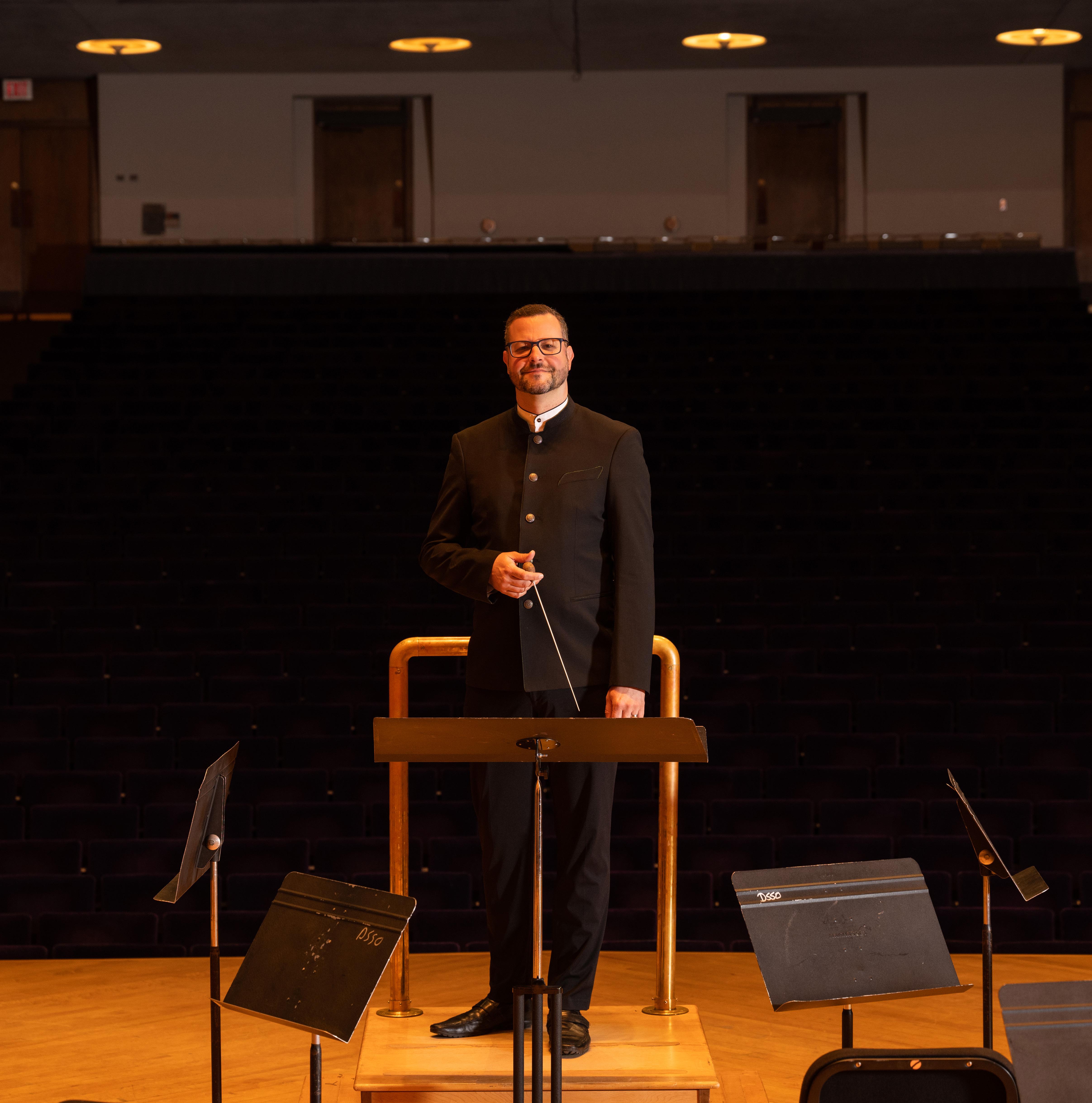
Fryberger,
 Buchanan, Smith & Frederick, P.A. is proud to support the arts.
Buchanan, Smith & Frederick, P.A. is proud to support the arts.
Counsel that strikes just the right chord.


Fryberger,
 Buchanan, Smith & Frederick, P.A. is proud to support the arts.
Buchanan, Smith & Frederick, P.A. is proud to support the arts.
Counsel that strikes just the right chord.






September 26 | 7:30 p.m.
University Recital Series
Vicki Fingalson, soprano

Teresa Vaughan, piano
Webb Recital Hall
November 14 | 7:30 p.m.
September 30 | 3:00 p.m
Collage Concert
Featuring UWS Alumni
Thorpe Langley Auditorium
University Recital Series | Vincent Osborn, double bass
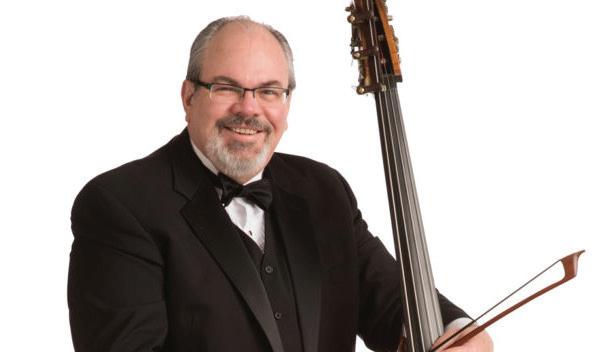
Theodore Schoen, clarinet | Ed Willett, cello | Erin Aldridge, violin
Hector Landa, piano
Webb Recital Hall
through the performance of symphonic music
October 17 | 7:30 p.m.
Twin Ports Brass Quintet
Steven Siegel, trumpet | Charlie Leibfried, trumpet
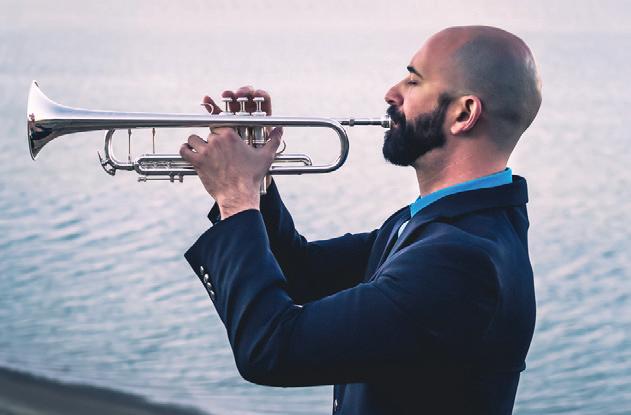
Deborah Rausch, horn | Derek Bromme, trombone
David Leslie, bass trombone
Webb Recital Hall
We envision a stronger community through

Time flies, if you’re having fun. Looking back at 10 years with the DSSO, it seems that I just started working here yesterday! It has been an incredible honor and privilege to lead this wonderful orchestra over the past decade. Together we have performed over 200 works – on our Masterworks Series alone. We made lots of memories along the way and I can’t wait to embark on our next decade together. One thing is for certain: More great music will find its way to us and enrich our lives, beginning with our 2023/24 Season:
As we continue our efforts to make underrepresented voices heard, we focus our attention on works written by female composers. From composers with a romantic voice, like Clara Schumann and Amy Beach, to more modern voices, like Anna Clyne and Joan Tower: This season we explore rich and powerful compositions, written by strong women around the globe. We are thrilled to even include a world premiere, a new work written for the DSSO by Duluth composer Wendy Durrwachter.
Our second focus this season is to celebrate our past 10 years together. What better way to do so than with audiences’ and musicians’ favorites. Last season we asked all of you to submit your favorites from the past decade. For the audience the clear winner was Carmina Burana, while the musicians voted Gustav Mahler as their favorite. With these blockbusters bookending the season, we complete our Masterworks Series with beloved composers like Mozart, Sibelius and Brahms. While, at the same time, presenting amazing works by lesser known masters, like Wieniawski, Walton and Weill.
In our Pops Series we bring back our Holiday tradition and take a stroll back through the Pops classics. This promises to be one of our most exciting and fun seasons ever. A great way to ring in the next decade!
Dirk Meyer, Music Director Duluth Superior Symphony Orchestra

BOARD OF DIRECTORS 2023-2024:
Mark Monson, Board President
John Berchild, Past Chair
Robert T. Bennett, Treasurer
Tammy Ostrander, Secretary
BOARD OF DIRECTORS
William Alexander
Sandra Barkley
Robert T. Bennett
John Berchild
Linda Boben
Mark Danielson
Rhonda Degelau
Beth Gilbert
Jeremy Hoglund
Jill Kaiser
Tina Koecher
James McLeod
Mark Monson
Emily Nygren
Tammy Ostrander
William “Buzz” Palmer
Branden Robinson
Kathleen Sanders
James Sebastian
Nairi Stack
Rajiv Vaidyanathan
Roberta Vose
HONORARY LIFE DIRECTORS
Christabel Grant
Elaine Killen
Dexter Larsen
Nancy Melander
James Zastrow
Welcome to the 2023-24 Season of your Duluth Superior Symphony Orchestra! I am so excited that you are able to join us for one (or all) of the concerts this year. Before I talk about this current season, I want to share with you some of the highlights from last year and this summer.
Last year, we grew our subscription base by more than 450 seats through our “9 for $90” offer. This introductory offer was a gateway for so many into our concerts, and we certainly set the bar across the nation for subscription growth. Over half of those individuals renewed their subscription for this season, so if you are one of them, thank you for coming back!

We also were fortunate to have three capacity concerts this calendar year. In February, the “Tribute to John Williams” concert was the Symphony’s first sell-out in seven years. Then the Beethoven 9 concert in May had only a few seats remaining, where something spectacular happened in the hall that night. Patrons are still talking about it to this day. And speaking of being talked about, August’s performance of “Jurassic Park in Concert” had people shouting, crying, laughing and clapping during and after the performance. John Williams’ score along with the 30th anniversary of an iconic movie was a spectacular event and we hope to bring more similar productions to the Twin Ports in the future.
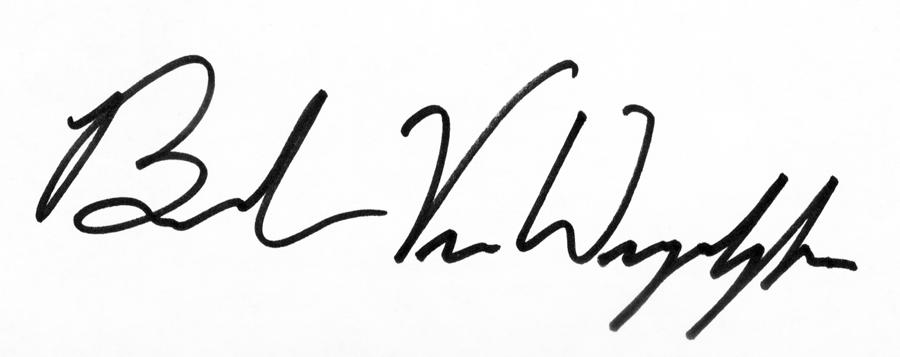
Fall brings change as well, and not just the color of the leaves. The DSSO is in the process of moving its administrative office back into the St. Louis County Depot, and we look forward to not only serve our patrons in a more visible location but also sharing the nearly 100 year history of the orchestra through archival displays.
On behalf of the Board of Directors, our Musicians, our staff and volunteer Chorus, thank you so much for your support of the DSSO. Your investment – whether through purchasing a ticket or donating – supports our musicians and their ability to make music for the Twins Ports Community. We are so happy to celebrate Dirk Meyer’s 10 years as Music Director, and we hope you join us for all of the concerts.











STAFF AND ADMINISTRATION:
ADMINISTRATION
Brandon VanWaeyenberghe, Executive Director
Kelly Katzmarek, Marketing Director
Jean Larson, Patron Service Manager
Ginger Dallin, Box Office Assitant
ARTISTIC STAFF
Dirk Meyer, The Charles A. & Carolyn M. Russell
Music Director
David Arnott, Manager of Orchestra Operations
Rebecca Adickes, Stage Manager
Maureen Breemeersch, Assistant Stage Manager
Kristin Sande, Music Librarian
CHORUS
Aine Miller, Chorus Administrator
Beth Sobczak, Rehearsal Accompanist
YOUTH ORCHESTRAS
Melanie Sever, Administrative Director and Concert Orchestra Conductor
Kristin Sande, DSSYO Administrative Assistant
Ronald Kari, Youth Orchestras Coordinator
Pedro Oviedo, Youth Symphony Conductor
Kevin Hoeschen, Sinfonia Conductor
Byron Klimek, Sinfonia Conductor
Teresa Aho, Sinfonia Conductor
Jeremy Craycraft, Percussion Ensemble Director
LAYOUT OF NORTHERN SOUNDS
Karen Blais
PRINTING OF NORTHERN SOUNDS
Pro Print
NORTHERN SOUNDS PROGRAM NOTES
Vincent Osborn, Program Notes Writer
Ronald Kari, Performance Historian, now in his 62nd Season with DSSO
DULUTH SUPERIOR SYMPHONY ORCHESTRA
Office: 506 W. Michigan St., Duluth, MN 55802
Mailing: 130 W. Superior St. LL2 – 120, Duluth, MN 55802
TICKETS
218–623–3776
tickets@dsso.com | www.dsso.com
Dirk Meyer (2013 – present)
Markand Thakar (2001 – 2012)
Yong-yan Hu (1995 – 2000)
Taavo Virkhaus (1977-1994)
Joseph Hawthorne (1967-1977)
Hermann Herz (1950-1967)
Joseph Wagner (1947-1950)
Tauno Hannikainen (1942 – 1947)
Paul Lemay (1932 – 1942)













DIRK MEYER, THE CHARLES A. & CAROLYN M. RUSSELL MUSIC DIRECTOR
Sponsors: Harris & Diane Balko; Elisabeth C. Mason; The Charles A. & Carolyn M. Russell Foundation
Erin Aldridge, Concertmaster
Sponsor: Arend & Verna Sandbulte in support of the concertmaster chair through the Sandbulte Orchestra
Leadership Fund
Mary Alice Hutton, Associate Concertmaster
Angela Waterman-Hanson, Assistant Concertmaster
Nicole Craycraft
Sponsor: Glen Holt
Kathleen Sanders
Sponsor: Terry & Vicki Anderson
Nairi Stack
Sponsors: Stack Brothers Mechanical Contractors;
Bill Stack
Joan Halquist
Sponsor: Anonymous Friend of the DSSO
Amanda Wirta
Sponsors: John & Rhonda Degelau
Daniel Radosevich
Sponsor: Anonymous Friend of the DSSO
Steve Highland
Sponsor: Thomas & Barbara Elliott
Jenna Mattson
Sponsors: Tom & Jill Kaiser
Kristin Sande
Lara Hicks
Laurie Bastian, Principal
Sponsor: Jacquie & Jim Sebastian
Jean Leibfried, Assistant Principal
Sponsor: Sandra Barkley
Amy Eichers
Sponsor: Thomas & Alice McCabe
Michael Husby
Sponsor: Brad Schmugge, CPA
Olga Chernyshev
Sponsor: Walter & Kay Gower
Michael Zellgert
Sponsor: Vern & May Nordling
Sarah Warner
Sponsor: Kathy & James Sanders
Kristen Anderson
Sponsor: James Seitz & Diane Kolquist
Mark Haroo
Sponsor: Anonymous Friend of the DSSO
Kevin Hoeschen, Principal
Sponsor: Rose & Lester Drewes
Ronald Kari, Assistant Principal
Sponsors: Stephen & Lauri Cushing; Ruth Ann Eaton
Clare Chopp
Sponsor: Martha Aas
Jonathan Kresha
Sponsors: Nancy Odden & Doug W. Britton
Kevin Peterson
Sponsors: Robert T. & Barbara K. Bennett;
Linda & Mark Boben; Elizabeth Cregan
J. David Arnott
Sponsor: Sylvia Jamar
Judy MacGibbon
Sponsor: Anonymous Friend of the DSSO
Kelli Barker
John Middleton
Betsy Husby, Principal
Sponsor: Christabel & James Grant
Lucia Magney, Assistant Principal
Sponsor: Ann Mars
Julia Morehouse
Sponsors: Nancy Melander; Nancy & Mark Melhus
Eric Graf (On Leave 23-24)
Sponsor: Anonymous Friend of the DSSO
Rebecca M. Peterson
Sponsor: Robert T. & Barbara K. Bennett
Darin Anderson
Sponsor: Michael & Sharon Mollerus
Byron Klimek
Lindsay Schlemmer
Scott Lykins
Sponsor: Anonymous Friend of the DSSO
Dan Keeler
DOUBLE BASS:
Cassidy Morgan, Principal
Vincent Osborn, Assistant Principal
Sponsor: Lane Fryberger Smith
Anthony Lischalk
Sponsor: John Ivey Thomas & Mary Rees Thomas
Family Fund
James McLeod
Sponsor: Branden Robinson
Irving G. Steinberg
Sponsor: Lurene Buhrmann
Blake Bonde
Sponsor: Carolyn Sundquist
FLUTE:
James DeVoll, Principal
Melanie Sever, Flute 2
OBOE:
Michael Dayton, Principal
Sponsor: Gary & Jacqueline Foley
Darci Griffith Gamerl, Oboe 2 (On Leave 23-24)
Sponsor: Anonymous Friend of the DSSO
Sarah Carmack Boyle, Oboe 3/English Horn
Sponsor: Anonymous Friend of the DSSO
CLARINET:
Jennifer Gerth, Principal
Sponsor: William & Saundra Palmer
Kristine Peterson, Clarinet 2
Sponsor: Anonymous Friend of the DSSO
Theodore Schoen, Bass Clarinet/Clarinet 3
Sponsor: Karl Diekman
BASSOON:
Michael Roemhildt, Principal
Sponsor Anonymous Friend of the DSSO
Jefferson Campbell, Bassoon 2
Karl Kubiak, Bassoon 3/Contrabassoon
Sponsor: Timothy Sandor
SAXOPHONE:
Gregory Kehl Moore, Principal
Sponsor: Anonymous Friend of the DSSO
HORN:
James Pospisil, Principal
Sponsor: James & Mary Zastrow
Erika Hammerschmidt, Horn 2
Sponsors: Roger & Elaine Engle; Robert & Mary Evans
HORN (continued):
Gwendolyn Hoberg, Horn 3
Deborah Rausch, Assistant / Utility
Sponsor: Anonymous Friend of the DSSO
TRUMPET:
Earl Salemink, Principal
Sponsor: Sharon & Robert Wahman
Charles Leibfried, Trumpet 2
Sponsor: Jeff & Vickie Cadwell; David and Patricia Mast
Thomas Pfotenhauer, Trumpet 3
Sponsor: Mark & Grace Monson
TROMBONE:
Larry Zimmerman, Principal
Sponsor: Gale & Jeri Kerns; Roberta Vose
James Erickson, Bass Trombone
Sponsor: Mark Danielson & Theresa Smith
TUBA:
Steve Grove, Principal
Sponsors: Helena Jackson & Doug Dunham
TIMPANI:
Fred Morgan, Principal
Sponsors: Happy Sleeper; John Fochs; Anonymous Friend of the DSSO
PERCUSSION:
Colin O’ Day, Principal
Sponsor: Susan J. Relf
HARP:
Janell Kokkonen Lemire, Principal
Sponsor: Elaine Killen
SATURDAY, SEPTEMBER 16, 2023 7 PM
DECC SYMPHONY HALL, ALLETE STAGE
DIRK MEYER, CONDUCTOR
ORION WEISS, PIANO
CLYNE 5’
Pivot
GRIEG
Piano Concerto in A minor, op 16 30’
Allegro molto moderato
Adagio
Allegro moderato molto e marcato
Orion Weiss, piano

INTERMISSION
BEACH 41’
Symphony in E minor, op. 32 “Gaelic”
Allegro con fuoco
Alla Siciliana
Lento con molto espressione
Allegro di molto
CONCERT SPONSOR:

One of the most sought-after soloists and chamber music collaborators of his generation, Orion Weiss is widely regarded as a “brilliant pianist” (The New York Times) with “powerful technique and exceptional insight” (The Washington Post). With a warmth to his playing that reflects his engaging personality, Weiss has dazzled audiences with his passionate, lush sound and performed with dozens of orchestras in North America including the Chicago Symphony, Boston Symphony, Los Angeles Philharmonic, and New York Philharmonic.

Recent seasons have seen Weiss in performances for the Lucerne Festival, the Denver Friends of Chamber Music, the Chamber Music Society of Lincoln Center, the Kennedy Center’s Fortas Series, and the 92nd Street Y, and at the Aspen, Bard, Ravinia, Seattle, and Grand Teton summer festivals, among others. Highlights also include his third performance with the Chicago Symphony Orchestra, a live-stream with the Minnesota Orchestra, a performance of Beethoven’s Triple Concerto with the Saint Paul Chamber Orchestra, the release of his recording of Christopher Rouse’s Seeing, and recordings of Gershwin’s complete works for piano and orchestra with the Buffalo Philharmonic Orchestra and JoAnn Falletta. Known for his affinity for chamber music, Weiss performs regularly with violinists Augustin Hadelich, William Hagen, Benjamin Beilman, and James Ehnes; pianists Michael Brown and Shai Wosner; cellist Julie Albers; and the Ariel, Parker, and Pacifica Quartets. As a recitalist and chamber musician, he has appeared across the United States at venues and festivals including Sheldon Concert
Hall, the Broad Stage, Seattle Chamber Music Festival, La Jolla Music Society SummerFest, the Schubert Club, Chamber Music Northwest, Bridgehampton Chamber Music Festival, and Spivey Hall. Weiss can be heard on the Naxos, Telos, Bridge, First Hand, Yarlung, and Artek labels in recordings such as The Piano Protagonists with The Orchestra Now led by Leon Botstein; Scarlatti’s Complete Keyboard Sonatas; a disc of Bartók, Dvorák, and Prokofiev; Brahms Sonatas with violinist Arnaud Sussmann; a solo album of J.S. Bach, Scriabin, Mozart, and Carter; and a recital disc of Rachmaninoff, Beethoven, Schumann, Massenet, and Piatigorsky with cellist Julie Albers. His career honors include the Classical Recording Foundation’s Young Artist of the Year, Gilmore Young Artist Award, an Avery Fisher Career Grant, the Gina Bachauer Scholarship at The Juilliard School, and the Mieczyslaw Munz Scholarship. A native of Ohio, Weiss attended the Cleveland Institute of Music and made his Cleveland Orchestra debut performing Liszt’s Piano Concerto No. 1 in 1999. The next month, with less than 24 hours’ notice, Weiss stepped in to replace André Watts for a performance of Shostakovich’s Piano Concerto No. 2 with the Baltimore Symphony Orchestra and was immediately invited to return later that year. In 2004, he graduated from the Juilliard School, where he studied with Emanuel Ax. In 2005, he toured Israel with the Israel Philharmonic Orchestra conducted by Itzhak Perlman. That same year, he made his New York recital debut at Alice Tully Hall, and his European debut in a recital at the Musée du Louvre in Paris.
We believe in putting people first and making a difference in the lives of women who are the heart of our hometowns.
With over 900 stores across the U.S. and Canada, we’ve been helping women celebrate style and live life to the fullest for over 90 years.


PIVOT Anna Clyne
BORN: March 9, 1980, London, England
WORK COMPOSED: 2021
WORLD PREMIERE: August 7, 2021, at the Edinburgh International Festival, Scotland; BBC Symphony Orchestra, Dalia Stasevska conducting
PERFORMANCE HISTORY: There have been no previous DSSO performances of any music by Anna Clyne.
INSTRUMENTATION: Flute and piccolo, two oboes, two bassoons, two horns, trumpet, trombone, string quintet (soloists) and strings.
DURATION : 5 minutes
Anna Clyne completed her first music composition at the age of seven and she was only eleven when one of her compositions was first publicly performed. Her musical career was only beginning. Clyne attended the University of Edinburgh where she graduated with a Bachelor of Music degree with honors. She earned a Master of Arts degree in music from the Manhattan School of Music. From 2008 to 2010, Clyne was director of the New York Youth Symphony’s Making Score program for young composers. She was composer-in-residence with the Chicago Symphony Orchestra from 2010 through the 2015 season, with the Orchestre National d’Île-deFrance from 2014-16, for the Baltimore Symphony Orchestra’s 2015-16 season, and with the Berkeley Symphony Orchestra from 2017-19.
Clyne was appointed Associate Composer with the Scottish Chamber Orchestra from 2019-22. In 2022-23 she was the composer-in-residence with the Philharmonia Orchestra and the Trondheim Symphony Orchestra. She will hold this position with the Helsinki Philharmonic Orchestra for their upcoming 2023-24 season.

Clyne has been commissioned by many arts institutions, including Carnegie Hall, Kennedy Center, Los Angeles Philharmonic and the Museum of Modern Art. In 2013 she wrote the concert overture Masquerade on a commission by BBC Radio 3 to open the Last Night of the Proms, where Marin Alsop conducted the BBC Symphony Orchestra in its premiere. In 2015, Clyne was nominated for a Grammy Award for Best Contemporary Classical Composition for Prince of Clouds, a double violin concerto. The New York Times described her as a
in a 2015 profile. In 2018, music critic Corinna da Fonseca Wollheim selected Clyne’s Lavender Rain for a New York Times feature on “5 Minutes that Will Make You Love Classical Music.”
Clyne herself provides notes for PIVOT on her website:
“PIVOT is inspired by my experiences at the Edinburgh Festival where I enjoyed an array of fantastic performances across the arts. It is this variety that I have tried to capture in PIVOT which, as the title suggests, pivots from one experience to another. The Pivot is also a former name of the 200-year-old folk music venue and pub in Edinburgh, The Royal Oak.
PIVOT quotes fragments of The Flowers of Edinburgh, a traditional fiddle tune of eighteenth century Scottish lineage that is also prominent in American fiddle music and thus bridges between Edinburgh and St. Louis, where this music was premiered. Thank you to Aidan O’Rourke for his guidance on folk fiddle bowings and ornaments, which are incorporated into “PIVOT.”
A review of PIVOT in the St. Louis Post Dispatch reads, “Moments reminiscent of the music of Leonard Bernstein, of movie music, more modern music and of course of Scottish music. At five minutes it’s brief, but energy-packed.”
“Composer of uncommon gifts and unusual methods”
Piano Concerto in A minor, op. 16
EDVARD GRIEG
BORN: June 15, 1843, Bergen, Norway
DIED: September 4, 1907, Bergen
WORK COMPOSED: 1868-69
WORLD PREMIERE: April 3, 1869, in Copenhagen; Holger Simon Paulli conducting, Edmund Neupert, soloist
PERFORMANCE HISTORY: Tonight marks the ninth DSSO subscription series performance of this Grieg Concerto. It was heard in 1937 (with soloist Percy Grainger), 1940 (with Alec Templeton), in both 1955 and 1980 (with Grant Johannesen), 1962 (Daniel Pollack), on September 22, 1995 (with Dan-Wen Wei and conducted by Yong-yan Hu on his first concert as the Orchestra’s Music Director), 2003 (Terrence Wilson and then repeated in Hibbing, MN the next day), and September 28, 2013 (Orion Weiss; Dirk Meyer conducting – his first DSSO concert as Music Director).
INSTRUMENTATION: Two flutes, two oboes, two clarinets, two bassoons, four horns, two trumpets, three trombones, timpani, strings and solo piano
DURATION : 30 minutes
Grieg is considered one of the foremost composers of the Romantic era and his music is part of the standard classical repertoire worldwide. With the use of Norwegian folk music in his compositions, Grieg developed a national identity and brought the music of Norway to fame.
Edvard Grieg was raised in a musical family and was taught piano by his mother. His father, Alexander Grieg (1806-1875) was a merchant and the British Vice-Consul in Bergen and his mother, Gesine Judithe Hagerup (1814-1875) was a music teacher. The family name, originally spelled Greig, is associated with the Scottish Clann Ghriogair (Clan Gregor). (Also known as Clan MacGregor, Clan Gregor claims its origin in the early 9th century. The clan’s most famous member is Robert Roy MacGregor (1671-1734), a Scottish outlaw who later became a folk hero.) After the Battle of Culloden (1746) Grieg’s great-grandfather Alexander Greig (1739-1803) traveled widely before settling in Norway about 1770 and establishing business interests in Bergen.

In the summer of 1858, 15-year-old Edvard played for family friend and eminent Norwegian violinist Ole Bull. Recognizing his talent, Bull persuaded his parents to send him to the Leipzig Conservatory to formally study the piano. Like many teenagers Grieg disliked the disciplined course of study; things haven’t changed much over the years. Grieg debuted as a concert pianist in Karlsham, Sweden in 1861, after surviving life-threatening respiratory ailments the previous spring.
In 1863, Grieg relocated to Copenhagen where for the next three years he focused more of his energies on composing. One main source of inspiration was the Norwegian composer Rikard Nordraak (composer of the Norwegian national anthem), who became a good friend to Grieg. Upon Nordraak’s death in 1866, Grieg composed a funeral march in his honor, which was also performed at his own memorial service in 1907.
During this time he also met a young singer, Nina Hagerup, who happened to be his first cousin, and four years later in June of 1867 they married. The following year they welcomed their only child, Alexandra, who died in 1869 from meningitis.
Grieg constantly sought relief from his respiratory ailments. In 1868 he traveled to Søllerød, Denmark to benefit from the warmer climate compared to that of Norway. While there, he composed one of his earliest and most important works, the Concerto for Piano in A minor.
Begun in June 1868, around the same time as the birth of Alexandra, and completed in early 1869, Edmund Neupert premiered Grieg’s Piano Concerto in Copenhagen on April 3, 1869. Interestingly, Grieg was not in attendance at the premiere due to a conducting commitment in Oslo! Grieg continued to revise the concerto many times, in 1872, 1882, 1890, and 1895. On July 21, 1907, six weeks before his death, he sent his last revision to his publisher. One of the most commonly performed editions nowadays was prepared in 1917 by Australian composer and pianist Percy Grainger. Grainger studied the concerto with Grieg and attested that the changes he made were with the composer’s authorization. Grieg also declared that Grainger played the work better than anyone. Most of the revisions dealt more with performance directions and orchestration than with the thematic material or shape of the work. Listen to the opening flourish of the piano, one of the most popular introductions to any concerto in the repertoire. The main theme enters with the winds, followed by the strings. This theme and the second theme, introduced by the strings following the piano’s statement of the first theme, are heard throughout the first movement. The exquisitely beautiful second movement with its melancholic lyricism will take you to wondrous, mystical places if you allow – and please do! Imitations of the Hardanger fiddle (Norwegian folk fiddle) and a sense of the Norwegian folk dance commonly performed at weddings, halling, are found in the final movement. You will also hear melodies reminiscent of floating on a calm lake, inviting you to leave your cares and worries behind. Imagine attending a wedding in the early afternoon on one side of a lake, getting into your boat and leisurely rowing across the lake to attend a different wedding celebration on another lakefront.
INSTRUMENTATION: Two flutes and piccolo, two oboes and English horn, two clarinets and bass clarinet, two bassoons, four horns, two trumpets, three trombones, tuba, timpani, percussion (triangle) and strings.
DURATION : 41 minutes
Amy Marcy Cheney Beach was the first successful American female composer of large-scale art music. She was one of the most respected and acclaimed American composers of her era and one of the first to succeed without the benefit of European training.
AMY BEACH
BORN: September 5, 1867, in Henniker, New Hampshire
DIED: December 27, 1944, in New York City, New York
WORK COMPOSED: 1894
WORLD PREMIERE: October 30, 1896, Boston; Boston Symphony Orchestra, Emil Paur conducting
PERFORMANCE HISTORY: The Orchestra performs music of Amy Beach for the first time with this Symphony.
Amy Marcy Cheney was born to Charles Abbott Cheney, a paper manufacturer and importer (whose uncle Oren B. Cheney co-founded Bates College) and Clara Imogene (Marcy) Cheney, who was reputed to be an excellent pianist and singer. Amy showed every sign of being a true wunderkind: at the age of one she was able to accurately sing forty songs, capable of improvising counter-melody to her mother’s singing by age two, and she taught herself to read at age three! At the age of four she was at her grandfather’s farm and composed three waltzes for piano - without a piano. She composed them mentally and played them when she returned home. Amy could also play music by ear, including four-part hymns. She finally began formal piano lessons from her mom when she was six. Within a year she was giving public recitals of works by Beethoven, Chopin, Handel and her own works. Her parents declined offers from multiple agents to have Amy do concert tours, for which she was later grateful.

Around 1871, when Amy was four, her family moved to Chelsea, Massachusetts, and four years later they relocated to Boston. Her parents were advised to enroll their young daughter in a European conservatory, however they chose local training, at first engaging Ernst Perabo and later Carl Baermann as her piano instructors. Her development as a pianist was monitored by a group including, among others, H.W. Longfellow, Oliver Wendell Holmes, William Mason, and Henry Harris Aubrey Beach (1843–1910), a physician who lectured on anatomy at Harvard University and was an amateur singer. She married him in 1885.
When Amy was fourteen she studied harmony and counterpoint for one year from Junius W. Hill, which would be her only formal training in composition. In 1884 she consulted Wilhelm Gericke, conductor of the Boston Symphony Orchestra from 1884-1889 and 1898-1906, who prescribed a course of independent study. Over the next ten years she taught herself composition and orchestration using a range of theory texts. She also translated both Hector Berlioz’s (1803-1869) and François-Auguste Gevaert’s (1828-1908) Treatise on Instrumentation.
Her marriage to Dr. Henry Harris Aubrey Beach in 1885, when she was eighteen and he forty-two, came with conditions that she “live according to his status, that is, function as a society matron and patron of the arts.” She also agreed to never teach piano, to limit herself to two public recitals per year with profits donated to charity, and to devote herself more to composition than to performing. Her selfguided composition education was necessitated because Dr. Beach disapproved of her having a tutor. During their marriage she was credited in the concert programs and published compositions as “Mrs. H. H. A. Beach.” After her husband’s death in 1910, she reverted to “Amy Beach” on a concert tour in Germany, but afterwards reverted back to Mrs. H. H. A. Beach for the remainder of her life.
Beach’s Gaelic Symphony is the first symphony composed and published by an American woman, a major milestone in music history! The premiere on October 30, 1896, performed by the Boston Symphony Orchestra, was an exceptional success, although the critics went to extraordinary lengths to relate any of its merits or defects to the composer’s sex. Composer George Whitefield Chadwick (1854-1931) wrote to Beach the he and his colleague Horatio Parker (1863-1919) had attended the premiere and enjoyed it greatly:
“I always feel a thrill of pride myself whenever I hear a fine work by any of us, and as such you will have to be counted in, whether you [like it] or not –one of the boys.” The “boys” referred to a group of composers unofficially known as the Second New England School and included Chadwick, Parker, John Knowles Paine (1839-1926), Arthur Foote (1853-1937), and Edward MacDowell (18601908). They collectively became known as the Boston Six when Beach, the youngest of the lot, was added to the list.
Beach was heavily influenced by Antonín Dvořák, who was teaching in America at the time. Similar to Dvořák, Beach incorporated folk music as thematic material into her Gaelic Symphony, the first American composer to do so in a symphonic work. Her belief was that composers should look to their own heritage for inspiration and she therefore chose music from the British Isles, the home of her ancestors. Her own song Dark is the Night!, which she set to the words of English poet William Ernest Henley, became the foundation of the symphony’s first movement. Several Gaelic themes are introduced in the second movement, first of which is an Irish tune played by the solo oboe. Listen for the rich harmonies by the woodwind chorale that accompanies the oboe. After a boisterous section with the strings, the oboe melody returns for a second visit after which the strings and flute end the movement with flourish, grace and a bit of humor.
The large Irish immigrant community in Boston faced considerable discrimination and hostility, especially from the higher crust of society into which Beach had married and empathizing with their plight was frowned upon in her social circle. She wrote that the third movement conveys
of the Irish people. The final movement is full of drama and triumph. Beach wrote that this movement was about the Celtic people, “their sturdy daily life, their passions and battles.”
The Gaelic Symphony was forgotten during the 1920s and made a resurgence in the 1930s and 1940s. Justifiably it is now being performed more regularly over the last twenty years or so. It is a wonderful work that has an irresistible charm with a big heart.
Program notes by Vincent Osborn © 2023
“the laments… romance and… dreams”
A great accompaniment to any show, stop by Silos and relax in our cozy bar & lounge with a craft cocktail, local beer, or glass of wine paired with a delicious appetizer.

pierbresort.com










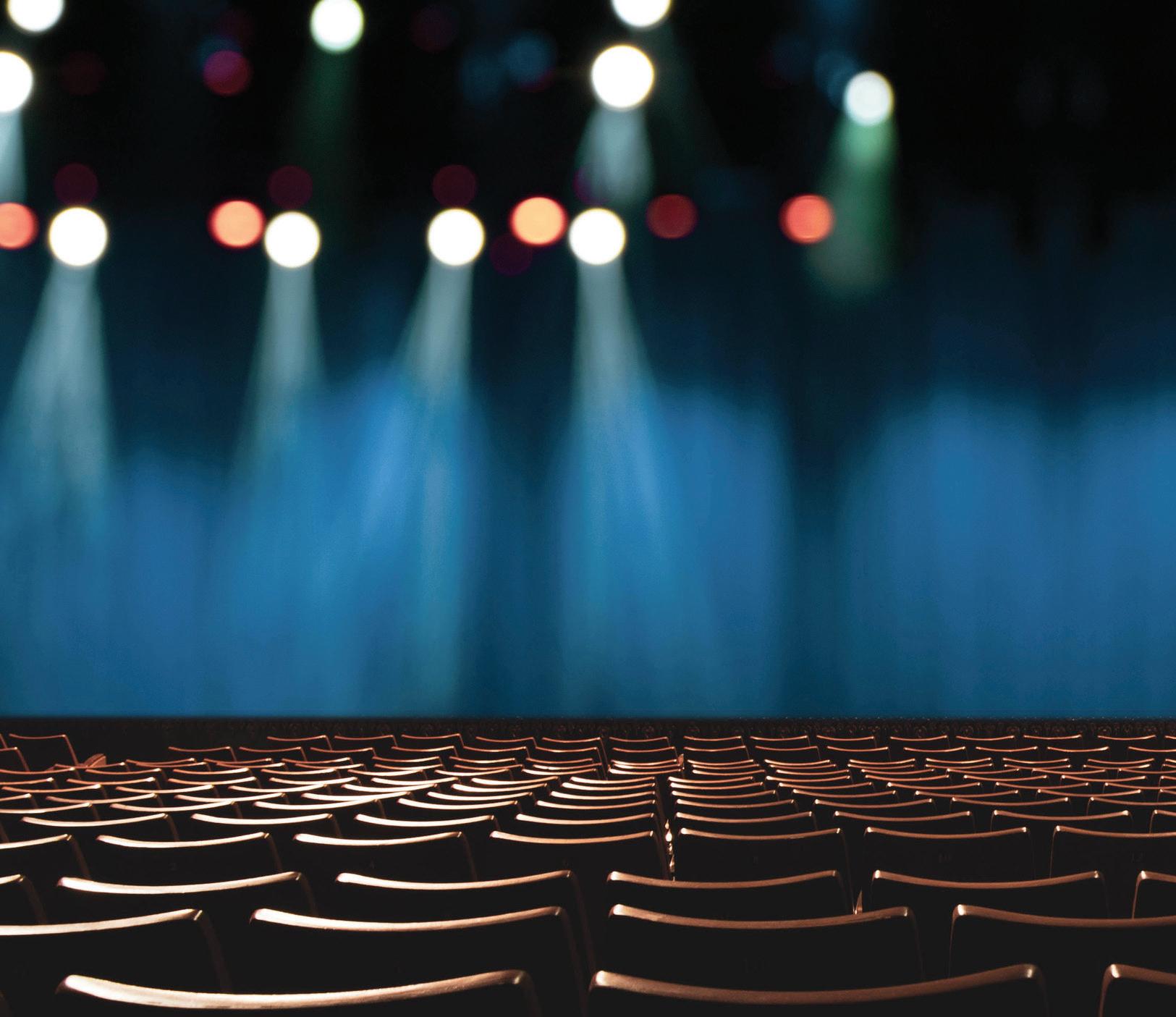
SATURDAY, OCTOBER 7TH, 2023 7 PM
DECC SYMPHONY HALL, ALLETE STAGE
DIRK MEYER, CONDUCTOR
BLYTHE GAISSERT, MEZZO-SOPRANO
DSSO WOMEN’S CHORUS, MICHAEL FUCHS, CONDUCTOR
LSYC CONCERT CHOIR, BRET AMUNDSON, DIRECTOR
MAHLER 99’
Symphony No. 3

Kräftig. Entschieden
INTERMISSION
Tempo di Menuetto. Sehr mässig. Comodo. Scherzando. Ohne Hast.
Sehr langsam. Misterioso.
Lustig im Tempo und keck im Ausdruck
Langsam. Ruhevoll. Empfunden.
Blythe Gaissert, Mezzo-soprano
Mezzo-soprano Blythe Gaissert has established herself as one of the preeminent interpreters of some of the brightest stars of new classical music. A true singing actress, she has received critical acclaim for her interpretations of both new and traditional repertoire in opera, concert, and chamber repertoire. “Gaissert gave a dramatically powerful, vocally stunning portrait of a woman growing increasingly desperate and delusional from lack of contact with the outer world. Gaissert’s development of Loats’s personality was utterly believable, and she gave a virtuoso performance of this very challenging music’ (Arlo McKinnon, Opera News for The Echo Drift). Known for her warm tone, powerful stage presence, and impeccable musicianship and technical prowess….
In the 19-20 season, Ms. Gaissert created the role of Dorothy in the world premiere of Kamala Sankaram and Rob Handel’s Looking At You with Here Arts Center NYC, sang Gertrude Stein in Ricky Ian Gordon and Royce Vavrek’s 27 with Intermountain Opera Bozeman, Hannah After in As One with Opera Columbus and Opera Memphis, covered Margret in Wozzeck at the Metropolitan Opera, sang Hansel in Hansel And Gretel at San Diego Opera, performed the world premiere of a chamber piece by John Glover and Kelly Rourke with Echappe Ensemble, sang Beethoven 9 with the Fort Worth Symphony, performed the world premiere of songs by Kamala Sankaram, David T. Little and Martin Hennessy with Sybarite5 as well as the world premiere of Robert Paterson’s Autumn Songs with American Modern Ensemble at Carnegie Hall. Blythe finished out with a recital of Brahms and Schubert with the Brooklyn Art Song Society.
In the 2018-19 season, Ms. Gaissert created the role of Georgia O’Keefe Today It Rains with San Francisco’s Opera Parallele, the world premiere of the third opera by the highly acclaimed and record setting team of As One: Laura Kaminsky, Mark Campbell and Kimberly Reed. She also reprises her role as Hannah After in her 6th production of As One with New York City Opera/American Opera Projects, performed Beethoven’s 9th Symphony with both the Buffalo Symphony and Sarasota Orchestra, and performed in a workshop performance of Laura Kaminsky’s fourth opera, also with librettist Kimberly Reed, Postville: Hometown To The World with Opera

Fusion: New Works in conjunction with Cincinnati Opera and her alma mater Cincinnati College Conservatory of Music. Recent engagements include Berio Folk Songs and Siegrune Die Walkuere with the Dallas Symphony, and Berlioz L’Enfance du Christ with the Orquesta Sinfónica y Coro Rtve conducted by Miguel Harth-Bedoya.
Previous engagements include Carmen, Orlovsky Die Fledermaus, Hansel Hansel Und Gretel, Siegrune Die Walkure, Lucretia Rape Of Lucretia, Maddalena Rigoletto, Suzuki Madama Butterfly, soloist in the Verdi Requiem, Berio Folk Songs, Mozart Requiem, world premieres by John Adams, Laura Kaminsky, Mikael Karlsson, Robert Paterson, Martin Hennessy, Mohammed Fairouz, Richard Pearson Thomas, Glen Roven, Yotam Haber, Jorge Martin, Tom Cipullo, Renee Favand-See, Gilda Lyons, Jessica Meyer, Gabriel Kahane and more. Companies with whom Ms. Gaissert has performed include the Metropolitan Opera, Los Angeles Philharmonic, LA Opera, Dallas Symphony, San Diego Opera, Prototype Festival, Aldeburgh Festival, Lyrique en Mer, Tulsa Opera, Lyric Opera of Kansas City, Sarasota Opera, and Opera Saratoga.
“Mezzo-soprano Blythe Gaissert was impossible to ignore as the headstrong Mother Marie. She has a pure, powerful and appealing voice and a forceful stage presence to match.”
(Denver Post)
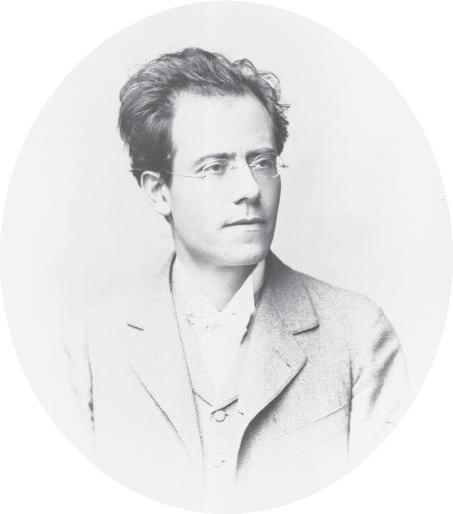
Symphony No. 3 in D minor GUSTAV MAHLER
BORN: July 7, 1860, in Kalischt, near Iglau, Bohemia [now: Kaliště, Jihlava, Czech Republic]
DIED: May 18, 1911, in Vienna, Austria
WORK COMPOSED: 1895-96
WORLD PREMIERE: June 9. 1902, Krefeld, Germany; Festival Orchestra of the German Musical Association (Allgemeiner Deutscher Musikverein), Mahler conducting
PERFORMANCE HISTORY: Tonight marks the first DSSO performance of this Mahler Symphony
INSTRUMENTATION: Four flutes (all doubling piccolo), four oboes (4th doubling English horn), four clarinets and E-flat clarinet (3rd doubling bass clarinet, 4th doubling E-flat clarinet), four bassoons (4th doubling contrabassoon), eight horns, four trumpets (one doubling posthorn), four trombones, tuba, timpani (two players), percussion (bass drum, snare drums, cymbals, triangle, tambourine, tam-tam, rute (bundle of attached canes for hitting drums), glockenspiels, chimes), two harps, strings, alto solo, women’s and children’s chorus.
DURATION: 99 minutes
Mahler’s Third Symphony belongs to the early period of his life and to his own personal quest for life’s meaning in the face of suffering and death. As a young man Mahler suffered great personal losses; his father died early in 1889 followed by the deaths of both his sister and mother later that same year. Suddenly, at the age of 29 and already in poor health, Mahler became a guardian of his four younger siblings. A worse tragedy befell Mahler when his younger brother Otto shot himself in February 1895. Faced with these challenges he was deeply affected by his encounter with the works of Friedrich Nietzsche (1844-1900). Mahler’s First Symphony, Titan, focused on heroism and earthly existence. His approach to redemption in his Second Symphony, Resurrection, is that humankind is subservient to God’s grace achieved through belief. The Third Symphony is Mahler’s attempt to experience all that nature has to offer in a quest to reach higher forms of existence, until ultimately forming a union with God and humanity.
The Third Symphony is the longest symphony in the standard repertoire and in a survey of conductors carried out by the BBC Music Magazine, was voted one of the ten greatest symphonies of all time. The Third has six movements and is divided into two parts. Part One is the first movement alone and Part Two consists of the other five movements. As he did with all of his first four symphonies, Mahler provided a programmatic description to explain the narrative of the piece, however he was ambivalent about the use of these descriptions. The following messages give an excellent example of Mahler’s diverse opinions regarding descriptive program notes, this to the critic Max Kalbeck in 1902:
Beginning with Beethoven there is no modern music without its underlying program. But no music is worth anything if you first have to tell the listener what experience lies behind it and what he is supposed to experience in it. And so yet again: to hell with every program! You just have to bring along ears and a heart along and - not least - willingly surrender to the rhapsodist. Some residue of mystery always remains, even for the creator.
At about the same time he wrote to the conductor
Josef Krug-Waldsee:
Those titles were an attempt on my part to provide non-musicians with something to hold on to and with a signpost for the intellectual, or better, the expressive content of the various movements and for their relationships to each other and to the whole. That it didn’t work (as, in fact, it could never work) and that it led only to misinterpretations of the most horrendous sort became painfully clear all too quickly. It’s the same disaster that had overtaken me on previous and similar occasions, and now I have
once and for all given up commenting, analyzing all such expediencies of whatever sort. These titles . . . will surely say something to you after you know the score. You will draw intimations from them about how I imagined the steady intensification of feeling, from the indistinct, unbending, elemental existence (of the forces of nature) to the tender formation of the human heart, which in turn points toward and reaches a region beyond itself (God). Please express that in your own words without quoting those extremely inadequate titles and that way you will have acted in my spirit. I am very grateful that you asked me [about the titles], for it is by no means inconsequential to me and for the future of my work how it is introduced into “public life.”
When Mahler completed the Third, dated August 6, 1896, the subtitle of the work was simply A Midsummer Noon’s Dream. The individual movements were titled:
First Part: Pan Awakes. Summer Comes Marching In
Second Part: What the Flowers in the Meadow Tell Me
What the Animals in the Forest Tell Me
What Humanity Tells Me
What the Angels Tell Me
What Love Tells Me
Critics of Mahler have great fun with these titles; Mahler was a flower-child long before it came into vogue. However, the titles of the movements disappear by the Third Symphony’s first publishing.
Mahler acquired a one-room cabin at Steinbach on the Attersee, about twenty miles east of Salzburg, in 1893 where he would spend summers composing. In the summer of 1895 his sister Justine (1868-1938) and his friend Natalie Bauer-Lechner (1858-1921) accompanied him there to look after him, which meant basically to silence the crows, waterbirds, children and whistling farmhands, as he began composing the Third Symphony. I’m reminded of Ken Russell’s 1974 film Mahler where a young woman (most likely Justine) is running all over silencing every possible noise that might be a disturbance to Mahler.
Part One opens with a declamatory fanfare that is heavy and menacing. Mahler described the effect of this opening to Bauer-Lechner: “Over the introduction to this movement, there lies again that atmosphere of brooding summer midday heat; not a breath stirs, all life is suspended, and the sun-drenched air trembles and vibrates.” A second theme, with winds and solo violin, offers some light into the ominous gloom. Several of the themes heard near the beginning will be transformed into material for the last three movements (fascinating in that Mahler wrote the first movement after the others). The entire movement is a series of marches that continue to build, becoming more
and more impassioned. A return to the menace of the opening march cuts off that section. The climactic ending of Part One is nothing short of breathtaking. The orchestra is playing at full force as Mahler instructs “mit höchster Kraft” (with all possible strength). This is certainly a place where not only the audience, but the orchestra as well needs a well-deserved break. After the first movement in the Second Symphony, Mahler calls for a short pause before beginning the remainder of the work; a break is recommended between Part One and Part Two of the Third Symphony.
Part Two, except for the finale, is a series of short character pieces beginning with Blumenstück, the first music he composed for this symphony Blumenstück is a minuet that is interrupted with a sinister section with brief moments of frantic activity, only to return to the gentle minuet. The third movement harkens back to his First and Second Symphonies. The love of nature in the First Symphony and the great summoning at the end of the Second Symphony are evoked.
The fourth movement enters with low strings and provides a foundation for the solo alto. Nietzsche provides the words to the Midnight Song from Also sprach Zarathustra with each of its eleven lines to be imagined as coming between two of the twelve strokes of midnight. “Oh man, give heed! What does deep midnight say? I Slept! From a deep dream have I waked. The world is deep. And deeper than the day had thought! Deep is its pain! Joy deeper still than heartbreak! Pain speaks: Vanish! But all joy seeks eternity. Seeks deep, deep eternity.”
As dark as Nietzsche’s midnight is, the change to a world of bells and angels is most welcome. The text for the fifth movement comes from Des Knaben Wunderhorn (The Boy’s Magic Horn) with interjections of Mahler’s words Du sollst ja nicht weinen (But you mustn’t weep). The children’s chorus is at first confined to bell noises but joins in later with the exhortation Liebe nur Gott (Love only God) and the final stanza. Mahler ends the Third with an exceptionally beautiful Adagio. As he explained to Bauer-Lechner, “In adagio movements everything is resolved in quiet. The Ixion [Ixion was a king who, by Zeus’ command, was pinned to a fiery wheel that revolved unceasingly through the underworld, as punishment for his alleged seduction of Hera] wheel of outward appearances is at last brought to a standstill. In fast movements - minuets, allegros, even andantes nowadays - everything is motion, change, flux. Therefore I have ended my Second and Third symphonies contrary to custom… with adagios - the higher form as distinguished from the lower.”
The final movement’s original title, What Love Tells Me, refers to Christian love, to agape, and Mahler’s drafts include “Behold my wounds! Let not one soul be lost!” And as Michael Steinberg writes, Mahler’s performance directions also speak to spirituality; the immense final bars with the thundering timpani are not to be played with brute strength, but with a rich, noble tone and the last measure should “not be cut off sharply” - so that there is some softness to the edge between sound and silence at the end of this profound utterance of serene power and beauty.
MASTERWORKS 3
MASTERWORKS 7
SATURDAY, NOVEMBER 4TH, 2023, 7PM
DECC SYMPHONY HALL, ALLETE STAGE
DIRK MEYER, CONDUCTOR
ERIN ALDRIDGE, VIOLIN
DURRWACHTER
Laurentia (world premiere) 23’
Gabbro and Ice
Forest and Fen
Superior Flowage
WIENIAWSKI 22’
Violin Concerto No. 2 in D minor, op. 22
Allegro moderato
Romance: Andante non troppo
Allegro con fuoco – Allegro moderato
Erin Aldridge, violin
INTERMISSION
SIBELIUS

Symphony No. 2 in D Major, op. 43 43’
Allegretto
Tempo andante, ma rubato
Vivacissimo – Lento e soave
Finale: Allegro moderato
CONCERT SPONSORS:
Erin Aldridge has won numerous awards as both soloist and chamber musician, and has been featured throughout Europe, South America, and the United States. She is a highly sought-after performer and pedagogue and has been published in Strings Magazine.

Erin maintains an active performance schedule as a soloist and chamber musician. She has been a soloist with the Duluth Superior Symphony Orchestra, the Lake Superior Chamber Orchestra, the Long Prairie Chamber Orchestra, the Mesabi Symphony Orchestra, and the Itasca Symphony Orchestra. She has been a guest artist at the Indiana University Summer Music Festival, Arizona State University, DePaul University Contemporary Concert Series, Madeline Island Music Camp, Ashland Chamber Music Series, National String Workshop, “Live at the Chazen” Concert Series, and has been broadcast on National Public Radio, the BBC, Minnesota Public Radio, and Wisconsin Public Radio. As a fiddler with Danny Frank and the Smoky Gold, Erin has been featured in festivals, and performances, and radio and TV across the Midwest, most recently being invited to perform at the 2023 Blue Ox Festival in Eau Claire, Wisconsin.
In the Twin Ports area, she received recognition as a prominent artist.In the spring of 2005, she was named concertmaster of the Duluth Superior Symphony Orchestra. She was selected for the “20 under 40” award by the Duluth News Tribune in the fall of 2007, an honor given to 20 professionals who are successful in their chosen fields and role models in the community. In 2012 she received the Community Enrichment Award from the Duluth Depot Foundation Annual Artist Awards and was honored by the American Association of University Women as one of four “Created Here” artists in the Duluth-Superior area. In 2023, she was awarded the prestigious Excellence in Teaching Award by the University of Wisconsin-System Board of Regents.
Erin attended Indiana University where she received her Bachelor’s degree in Violin Performance. She received her Master’s degree and Performer’s Certificate in Chamber Music Performance from the University of Wisconsin-Milwaukee and was a member of the Leonard Sorkin Institute of Chamber Music under the direction of the Fine Arts Quartet. She continued her studies at the University of Wisconsin-Madison where she received her Doctor of Musical Arts degree in Violin Performance. Her primary teachers include Mimi Zweig, Josef Gingold, Nellie Shkolnikova, Rostaslav Dubinsky, Efim Boico, and Vartan Manoogian.
Erin has several recordings, including her recording of Eugene Ysaÿe’s Six Sonatas for Solo Violin, Op. 27, and composer Justin Rubin’s Constellations for the MSR Classics label. In addition, she has done several recordings with acclaimed singer-songwriter Sara Thomsen as well as the Three Altos, and has an upcoming release album of a live performance recording at Sacred Heart with her band Danny Frank and the Smoky Gold.
In 2003, Dr. Aldridge joined the music faculty at the University of Wisconsin-Superior. She is the Concertmaster of the Duluth Superior Symphony Orchestra and Lyric Opera of the North Orchestra, was a long-time faculty member of the Indiana University Jacobs School of Music Summer String Academy and is a member of the bluegrass/Americana/folk-based band Danny Frank and the Smoky Gold.
WENDY DURRWACHTER
BORN: December 19, 1977, in Madison, Wisconsin
WORK COMPOSED: Completed April 27, 2023
WORLD PREMIERE: November 4, 2023, Duluth, Minnesota; Duluth Superior Symphony Orchestra, Dirk Meyer conducting

PERFORMANCE HISTORY: This world premiere marks the first original composition by Wendy Durrwachter to be played by the DSSO.
INSTRUMENTATION: Two flutes (doubling alto flute and piccolo), two oboes (one doubling English horn), two clarinets (one doubling bass clarinet), two bassoons (one doubling contrabassoon), four horns, three trumpets, three trombones, tuba, timpani, percussion (vibraphone, marimba), harp, piano and strings.
DURATION : 23 minutes
I have spent a lifetime with various opportunities to explore the Great Lakes. My childhood family road trips explored the shores of Lake Michigan from Door County, WI - either on the southern borders through the US or northern borders over the Mackinac Bridge into Canada - to Niagara Falls. Trips in the other direction provided glimpses of the Lake Superior south shore to Isle Royale and the north shore to the Boundary Waters Canoe Area and Quetico Provincial Park through Grand Marais. Later road trips from Duluth with my kids
would bring me to explore Lake Huron and Ontario as well as the full north shore of Lake Superior. It is a remarkable thing to retreat into your imagination into an omniscient perspective of the interconnectivity of the waterways of the unique chain of lakes in the BWCA/Quetico Provincial Park to the Great Lakes, traveling all the way to the Atlantic Ocean. Because the continent has a border drawn through its middle, it is easy to perceive the Duluth Superior watershed as being marginal or on the edge of our country. But when we remove the map’s international border, it is easy to see that the Duluth, Minnesota area is actually in the very center of the continental bedrock that comprises the North American Craton – Laurentia. Of additional regional importance is the short drive to Hibbing to the triple point in which rivers begin to flow in three different directions to reach Hudson Bay, the Gulf of Mexico, or the Atlantic. Remarkably, this region was a central figure in the Mid-continent Rift that began 1.1 billion years ago. This rift that created the lowest depths drawn through the center of Lake Superior almost created a continental divide. With its tangential arms, the rift is the significant event that gave us the extraordinary marvel that is the Great Lakes. I am astonished when I travel to the US coasts to encounter people who have never heard of Lake Superior - hardly knowing anything about the Great Lakes – which are by far the largest deposit of fresh water on earth! When I stand on these rocks on the north shore of Minnesota, I imagine the geological story of their creation, a mental journey through ancient time - from their 2.5 billion year-old initial volcanic formation into their much later twenty glaciations. It is impossible to ignore the dynamic story of fire and ice that shaped this region to become the rarity it is. When commissioned by the DSSO to write a piece that honors the region of Duluth, I immediately came to this topic.
The first movement begins with a meditative theme of the passing of time with a minimal orchestration and a simple rhythmic motif showing variance in time. It gradually builds to a grand, richly layered orchestration breaking open the earth’s crust in time lapse. The fire motif is introduced. It then transitions to the slow passing of a glacier where the ice motif is introduced and dwindles away.
The second movement is my time-lapsed reflection of life forming in the region. It is a snapshot imagining tree roots developing into a network beneath the soil as they weave between crevices in the jagged bedrock. Then it transitions to a bog/fen region, an underground water “scene” elevating to the surface with a slow flow.
The third and final movement begins with our treasured aurora borealis over this imagined region of still water. It then transitions into various moving bodies of surface water – streams, slowly flowing lakes, and rivers. It ultimately builds into a rushing, grandiose drainage over the Superior Hiking Trail escarpment into the world’s largest fresh-water flowage of Lake Superior. Each setting or era brings on the necessity of new thematic material, however, the two motives (for fire and ice) introduced in the first movement return, scattered throughout the entirety. In each return the character of the new material changes the character of the two early motives to weave it all into the present of today.
Violin Concerto No. 2 in D minor, Op. 22 HENRYK WIENIAWSKI
BORN: July 10, 1835, in Lublin, Poland
DIED: March 31, 1880, in Moscow, Russia
WORK COMPOSED: Began in 1856; dedicated to Pablo de Sarasate
WORLD PREMIERE: November 27, 1862, in St Petersburg, Wieniawski soloist, Anton Rubenstein conducting
PERFORMANCE HISTORY: This Wieniawski Concerto has been presented twice before on the Masterworks Series: in 1955 with Erica Morini and 1982 with Elmar Oliveira.
INSTRUMENTATION: Two flutes, two oboes, two clarinets, two bassoons, two horns, two trumpets, three trombones, timpani, strings and solo violin.
DURATION : 22 minutes.
Henryk Wieniawski was one of the eminent violinists of the mid-19th century. He was a member of a distinguished family of Polish musicians. His younger brother Józef (18371912) was an accomplished pianist and a versatile composer. Their nephew Adam Tadeusz Wieniawski (1879-1950) was also an accomplished composer. He was appointed leader of the Warsaw Musical Society in 1928 and taught at the Chopin Music School and was its director after World War II for a brief period.

Henryk showed exceptional talent on the violin at a very young age. After playing a brilliant audition he was admitted to the Paris Conservatoire at the age of eight. On January 30, 1848, he played a concert accompanied by his younger brother Józef, after which he departed for St Petersburg where he gave five successful concerts. There he earned the praise of Henri Vieuxtemps (1820-1881), at the time the solo violinist in the court of Tsar Nicholas I. Henryk returned to the Paris Conservatoire in 1849 to study harmony. In 1850, at the age of fifteen, he was made an honorary member of the Societé Philharmonique and received the Cercle-des-Arts.
From 1860 to 1872 Wieniawski lived in St Petersburg where he was extremely active as a solo violinist to the tsar, leader of both the orchestra and string quartet of the Russian Musical Society and from 1862 to 1868 professor of violin at the newly established conservatory. To say that he exerted a decisive influence on Russian violin pedagogy would be an understatement. This was also an era when he wrote a significant number of his compositions, including the Violin Concerto No. 2, his finest work.
Wieniawski possessed a superlative technique on the violin, a mastery that amazed all who heard him. It was written that all the advanced wizardry of the legendary virtuosos was apparently no challenge to him. His intensity of emotion and expressivity impressed the musical establishment the most. He was hailed as one of the great geniuses of the violin of all time and the successor to the immortal Paganini. The Second Violin Concerto, which he dedicated to the great Pablo de Sarasate, bears all the technical acrobatics and extravagant romanticism expected to show off a true virtuoso.
The extensive introduction to the first movement begins in a rather subdued, moody atmosphere
before bringing in the soloist to explore the opening themes already heard. The virtuosic embellishments seem organic and not at all out of place. Unlike nearly every concerto from that period, it lacks the development or recapitulation sections. The second movement Romance follows without pause, the melody of which is guaranteed to tug at the heartstrings. Intuitively the movement is short enough to keep the audience awaiting the explosive, exciting final movement. Marked as à la Zingara (in the Gypsy manner), the last movement is a tip of the hat to the dedicatee Sarasate and his famous Zigeunerweisen. One can only imagine the audiences of the day hearing this unequivocal master of the violin in performance.
Wieniawski loved to perform. After his tenure in Russia he undertook, with Rubinstein, a remarkable tour of North America. They performed an astounding 215 concerts during the first year. Although both were near exhaustion, Wieniawski remained for a second year and shared the stage with soprano Paulina Lucca (1841-1908). He made a fortune, but seriously endangered his health. Upon his return to Europe he accepted the offer in 1875 to replace Vieuxtemps as professor of violin at the Brussels Conservatory, a post he kept for only two years. Despite his deteriorating health (he suffered from a severe heart condition), he continued traveling and performing because of his financial need (he also had a severe gambling addiction).
During a performance of his Second Violin Concerto on November 11, 1878, Wieniawski collapsed and was carried off the stage. A few minutes later Joseph Joachim, who was in the audience, came out on stage with Wieniawski’s violin and announced, ‘Although I cannot play my friend’s wonderful concerto, I shall play Bach’s Chaconne.’
By the end of Joachim’s performance Wieniawski had slightly recovered and embraced his friend on the stage. Continuing health problems plagued Wieniawski for the next few months until he was able to perform a farewell concert in April in Odessa. He returned to Moscow after the concert and was admitted to the Mariinsky Hospital in November. Tchaikovsky’s patron Nadezhda von Meck took Wieniawski into her home on February 14, 1880, to give him medical attention and hospice care. His friends arranged a benefit concert to help provide for his family. A few weeks later Wieniawski, at only 44 years old, died of a heart attack. His Second Violin Concerto remains one of the most popular violin concertos in the repertoire, memorable for its lush melodies and harmonies.
Symphony No. 2 in D major, Op. 43
JEAN SIBELIUS

BORN: December 8, 1865, in Hämeenlinna, in the Russian Grand Duchy of Finland
DIED: September 20, 1957, in his home, Ainola, at Lake Tuusula, Järvenpää, Finland
WORK COMPOSED: 1901
WORLD PREMIERE: March 8, 1902, in Helsinki; Helsinki Philharmonic Society, Sibelius conducting
PERFORMANCE HISTORY: The longest and most popular of the Sibelius symphonies, this work has been given eleven times previously on the Masterworks Series. It was also played in 1938, 1940, 1944, 1951, 1956, October 28, 1966 (the Orchestra’s first Masterworks concert in its new home – the Duluth Auditorium, now the DECC’s Symphony Hall), 1972, 1983, 1998, 2003, and 2014.
INSTRUMENTATION: Two flutes, two oboes, two clarinets, two bassoons, four horns, three trumpets, three trombones, tuba, timpani and strings.
DURATION : 43 Minutes.
“YOU HAVE BEEN SITTING AT HOME for quite a while, Mr. Sibelius, it is high time for you to travel. You will spend the late autumn and the winter in Italy, a country where one learns cantabile, balance and harmony, plasticity and symmetry of lines, a country where everything is beautiful – even the ugly.” Baron Axel Carpelan (to whom the symphony is dedicated) wrote these words to Sibelius in 1900
and through his connections was able to find a patron to supply the funds. In October 1900, Sibelius and his family left their home. Staying in Berlin for two months, they continued to Italy at the end of January 1901, settling in a mountain villa near Rapallo.
The solace Sibelius found there brought about a remembrance of reading Flegeljahre, by Jean Paul (1763-1825): “the midday moment has something ominous to it… a kind of muteness, as if nature itself is breathlessly listening to the stealthy footsteps of something supernatural, and at that very moment one feels a greater need for company than ever.” Solitude, anticipation, anxiety – things we’ve all experienced at one time or another.
Following this recollection of reading Jean Paul, Sibelius wrote: “Don Juan. Sitting in the twilight in my castle, a guest enters. I ask many times who he is. – No answer. I make an effort to entertain him. He remains mute. Eventually he starts singing. At this time, Don Juan notices who he is – Death.” On the other side of the paper he wrote the date, “2/19/01”, and then sketched the melody that became the bassoon theme (in D minor) of the second movement of the Second Symphony. In Florence two months later, Sibelius drafted a second theme (originally in C major, later to be in F-sharp major), above which he wrote ‘Christus.’ We might consider the first theme Defeat and Death and the latter theme Resurrection and Life. What are we to make of Sibelius and his music?
In 1907 Sibelius met Gustav Mahler. This was the only time they were to meet. Remembering the encounter Sibelius wrote:
When our conversation touched on the essence of symphony, I said that I admired its severity and style and the profound logic that created an inner connection between all the motives. This was the experience I had come to in composing. Mahler’s opinion was just the reverse. “Nein, die Symphonie müss sein wie die Welt. Sie müss alles umfassen.” (No, the symphony must be like the world. It must embrace everything.)
This encounter speaks volumes about both composers. Perhaps the difficulty with Mahler is that his symphonies are huge, sprawling masterpieces that require the total concentration of the listener – they were unique for their time and also for the current day. The symphonies of Sibelius are masterful, yet more concise and they come to a logical completion.
The connection between all four movements of the Second Symphony is one of the aspects that makes this work so enduring and powerful. From the opening measures to the very last notes we feel as if we have been on a long trip. Imagine a journey
where there are ample opportunities to stop, enjoy the scenery, have something to eat, take a walk and continue on because the final destination has not been reached. As we get closer to our destination we become more anxious as time seems to slow and the anticipation is too much to bear. At the end we finally realize that any difficulties we encountered during our journey have been mitigated by the pure joy we now find.
A few quotes about the Second Symphony may help to enhance our enjoyment:
The effect of the andante is that of the most crushing protest against all the injustice which today threatens to take light from the sun (…) [The scherzo] depicts hurried preparation (…) [The finale] culminates in a triumphant closure which is capable of arousing in the listener a bright mood of consolation and optimism.
Robert Kajanus, conductor, 1902The second symphony is a song of praise for summer and the joy of life.
Simon Parmet, conductor, 1955
I find this work vulgar, self-indulgent and provincial beyond any description.
Virgil Thomson, critic and composer
In comparison with the first symphony, the second symphony already shows a dignified man of the world looking into the horizon. We have moved from Slavism to Central Europe. Still, from time to time I also see images of Karelian grandmothers practising their witchcraft.
Jukka-Pekka Saraste, conductor, 2002
The second symphony is connected with our nation’s fight for independence, but it is also about the struggle, crisis and turning-point in the life of an individual. This is what makes it so touching.
Osmo Vänskä, conductor, 1998The Helsinki Philharmonic Society premiered the Symphony No. 2 in D major on March 8, 1902, with Sibelius conducting. Historically, Finland was experiencing a struggle for independence from Russia, suffering imposed sanctions on the Finnish language and culture. The symphony was immediately received as a patriotic, nationalistic message and was dubbed the “Symphony of Independence.” Sibelius rejected any programmatic labels and claimed that all his symphonies are pure absolute music. Regardless of his claims, few composers are as identified with their nationality as Sibelius. His music plays an important role in the formation of the Finnish identity.
Program notes by Vincent Osborn © 2023
DSSO chorus master Richard Robbins is the director of choral activities at the University of Minnesota Duluth, where directs the University Singers and Chamber Singers, in addition to teaching an array of choral conducting and music courses. Robbins travels extensively as a clinician, adjudicator, and director for choral festivals and honor choirs across the country, with recent engagements in Miami, Los Angeles, Orlando, San Francisco, Chicago, Baltimore, and New York City. He has conducted and lectured internationally on multiple occasions at Warsaw’s Chopin Conservatory of Music, the John Paul II Liturgical Institute, and at Krakow’s Academy of Music. As a conductor, his performances have been featured on numerous nationally syndicated programs, including American Public Media’s Pipedreams. His extensive experience in preparing choral-orchestral performances includes leading choirs for the Houston Ballet and for over 50 performances with the Houston Symphony. He has prepared choruses for several major conductors, including Christoph Eschenbach, Ermanno Florio, Hans Graf, Joan Glover, Bernard Labadie, Klaus Peter Flor, Michael Krajewski, Stephen Cleobury, Robert Franz, and Dirk Meyer
Learn
dsacommunityfoundation.org




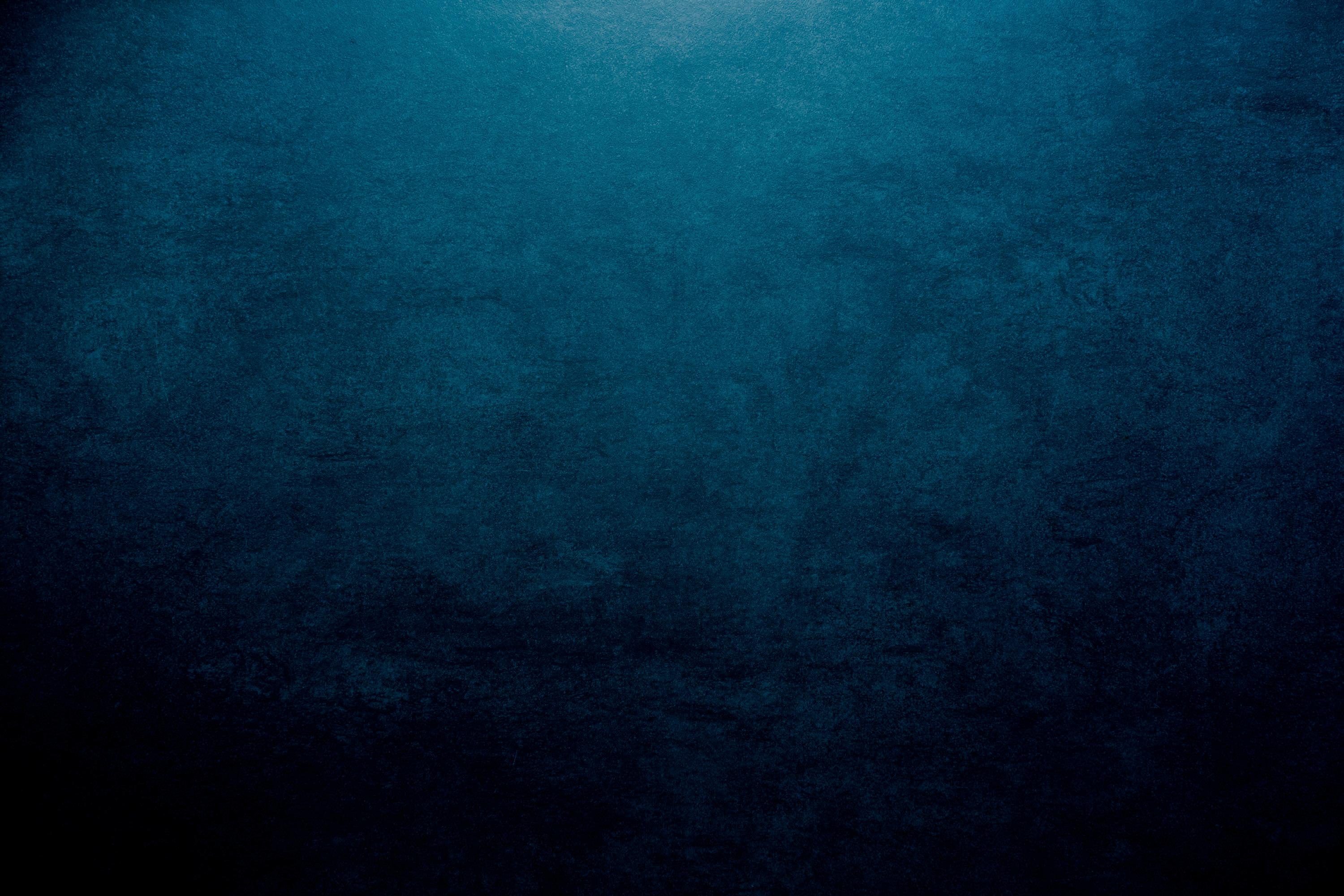











Just as it takes an ensemble to perform the great works of Beethoven, so it takes a collection of individuals to support the work of the Duluth Superior Symphony Orchestra. When you give to the DSSO, you are supporting an organization that is a cultural cornerstone of the Twin Ports region, bringing together the best of our local musicians to entertain, educate and enrich the lives of more than 20,000 individuals each year.
Your ticket purchase tonight was important - but it only covers a quarter of our annual operating expenses. Individual donors play an important part in helping the Symphony bridge that gap. Each season, gifts from individuals provide more than 60% of our contributed income. That means donations of any size make a big difference and support our efforts to share great music with everyone in the community.
In Person - Come say hello to us at the tables in the lobby. We want to hear your stories about concerts you have enjoyed over the years.
Call the Office - We are happy to process your donation over the phone and love it when you call!
Donate Online - Give securely by visiting www.DSSO.com/give
Debit Transfer - Join other DSSO patrons and simply authorize your banker to initiate a reoccurring debit transfer from your account directly to the DSSO.
Mail Us a Check - We know it can be old-fashioned, but our office loves getting mail. 130 W. Superior St Suite LL2 - 120 Duluth, MN 55802
IRA Donation - Are you 70½ or older? You can support the music you love with a Qualified Charitable Distribution from your IRA. Please consult your tax or financial advisor for more information.
Charitable Bequest - Write your own story with planned gifts to the people & organizations you value by writing them to your Will and beneficiary designations.
Stock Donations- You can transfer appreciated stock as a gift that is fully tax-deductible.
The Legacy Society recognizes and honors the visionary individuals, couples, and families who have included the DSSO in their estate plans, ensuring that the music you care about continues into the future. To join the Legacy Society, you can make a bequest to the DSSO as part of your Will, name the organization as a beneficiary in a policy or retirement fund or provide a direct cash donation into our endowment.
To begin, contact your attorney and ask for the DSSO to be included in your Will, Trust or policy. Then contact the DSSO office and we can provide you with a membership form so we can begin recognizing your generosity and including your gift in our future planning.
In recognition of their support, Legacy Society members are listed in all concert Program Books and are invited to an exclusive annual benefit event each year.
The Duluth Superior Symphony Orchestra (DSSO) is proud to be a part of the Twin Ports business community. The Symphony is an employer, a downtown tenant, a consumer, an advertiser, and a member of the Chamber of Commerce. We understand that each company has different needs and motivations, from marketing and brand identification to client and employee entertainment and recognition, and more. We welcome the opportunity to discuss your corporate objectives and identify customized ways we can work together for mutual benefits.
The DSSO Donor Lounge is a space for where our most invested patrons can gather before a concert and during intermission. Access to the Donor Lounge starts with gifts to the annual fund of $1,000 and includes access to a private bartender on the second floor of the Symphony Hall Lobby Space.
THANK YOU TO THE FOLLOWING CORPORATE AND INDIVIDUAL CONTRIBUTORS WHO HAVE GIVEN IN SUPPORT OF THE DSSO JUNE 1, 2022 THROUGH AUGUST 11, 2023.
MAESTRO
($25,000 & up)
The Depot Foundation
Elisabeth C. Mason Revocable Trust
Margaret Ames Memorial Fund
McKnight Foundation
Minnesota State Arts Board
Muriel Whiteside Charitable Trust
PRINCIPAL
($10,000 to $24,999)
Charles & Carolyn Russell Foundation
Jeremy & Carol Fryberger
Helena Jackson
Lloyd K. Johnson Foundation
Anonymous
Dr. Michael & Sharon Mollerus
Vern & May Nordling
Nancy Odden & Doug Britton
Pachel Foundation
Dr. Ann Rock
Arend J. & Verna Sandbulte
Wildey H. Mitchell Family Foundation
GUEST ARTIST
($6,000 to $9,999)
Essentia Health
National Bank of Commerce
North Shore Bank of Commerce
FULL CHAIR
($4,500 to $5,999)
Dr. Vicki & Terry Anderson
Linda & Mark Boben
Karl Diekman
Thomas & Barbara Elliott
Sylvia Jamar
Minnesota PowerAn ALLETE Company
William (“Buzz”) & Saundra Palmer
Brad Schmugge
James & Jacquie Sebastian
St. Luke’s
Shirley Tratechaud
HALF CHAIR
($2,500 to $4,499)
Robert T. & Barbara Bennett
Hon. David & Gloria Bouschor
Adelaide M. Cline
Gary & Jacqueline Foley
Dr. Beth Gilbert
Christabel & James Grant
Elaine B. Killen
Kathleen & James Sanders
Timothy Sandor
Bill Stack of Stack Bros. Mechanical Contractors
Carolyn Sundquist
The Teberg Fund
($1,200 to $2,499)
Martha A. Aas
Bell Bank
John & Kathleen Berchild
Lurene Buhrmann
Jeffrey & Vickie Cadwell
Alison Clarke
Steve & Lauri Cushing
Mark Danielson & Theresa Smith
John & Rhonda Degelau
Rose & Lester Drewes
Ruth Ann Eaton
Roger & Elaine Engle
Mary Evans
Harold & Ruth Frederick
Walter & Kay Gower
John Fochs of Happy Sleeper Mattress
Dr. Glen E. Holt
Jill & Tom Kaiser
Robert Knighton
Tina Koecher
Mary & Jim Krook
Patricia & David Mast
Thomas & Alice McCabe
Nancy Melander
Mark & Grace Monson
Heather Muster
Tammy Ostrander & Tony Barrett
Jennifer Owen
Branden Robinson
Lane F. Smith
Tobin Sobaski & Kari Koehler
Roberta Vose
Dr. Robert Wahman
Gudrun & Geoffery Witrak
Cathleen & Kirby Wood
James & Mary Zastrow
($600 to $1,199)
Sandra Barkley
Susan Bathory & Donald Lane
Benedictine Sisters of St. Scholastica Monastery
Kate Dean
Kari Dresback
Rondi Erickson
Louise (Margaret) Foss
Kay & Ronald Gustafson
Christine Hensolt
Dr. Jason & Megan Johnson
Otto Johnson & September Mihaly
Ronald Kari
John & Sharon Kemp
Gale & Jeri Kerns
Richard D. Kivela
Diane Kolquist & James Seitz
Dennis Lamkin & Jon Niemi
Dirk & Paula Meyer
Gerald & Mary Ann Ostroski
Gerald & Karen Ruona
Nicholas & Dr. Mark Scott
Anita Swanson
Dr. Andrew Thompson
Geiger & David Yount
($200 to $599)
John Alexander Anonymous
Allen Anway
Charles R. Babst
Leonore & Robert Baeumler
Susanne & Johan Bakken
Riley Barka
Daniel & Marjorie Bergeland
Janice Biga
Angie Bomier
Tamara Bottge
Gary & Kathy Bubalo
Maryjane Burdge
Bill & Renee Burns
Jean & Sharon Captain
Jan Carey
Jay Carlsgaard
Mary & Jeff Charnes
Timothy & Kathleen Cortes
Jerry Curnow
John & Judy Dahl
Dorothy Dayton
Kathleen DeSanto
Linville Doan
R. Craft & Ellie Dryer
Paul Enenbach
Paula Fenstad
Martha & Conrad Firling
David & Barbara Gaddie
Patricia Gannon
Karen Gran
Michelle Gribbon
Carlton Gustafson
Linda Haagensen
Lois & Robert Heller
Shirley Herman
Barbara Hjort
Mark & Sharon Holm
Paul & Alice Holm
Wayne Holmberg
Oliver & Mary Ann Houx
Bill & Kate Isles
Kenneth G. Jackson
Pamella Jacobson
Dan & Lois Jaeckel
James Jarocki
Ellis Johns
Dennis & Susan Johnson
Matthew Johnson
Linda Jorgenson & Jack Gunderson
John & Beth Kelly
Carol & Paul Knuti
Mark Kolbo
Katherine Kuettel
Andre & Marilyn LaMourea
James Lampi
Sharon Layon & Neil Nelson
Michael Lillo
Gary & Nancy Loberg
Paul Lokken
Candace Madich
John & Michelle Magdsick
Rachel & Gregory Mason
Dean & Kate McCall
Robert Meese Jr. & Ann E. Small
Gary & Darla Meier
Barbara Melde Olson
David Mesner & Joyce Piper
Alice & Don Michels
Julie Michels
William Miner
Pam Moore & Jon Stephenson
Daniel & Catherine Mundt
Jennifer Naegele
Jeannette Nesseth
Emily Nygren
Vincent & Sharon (Rigby) Osborn
David J. Ouse
Deborah Rausch
Mary Pat Renaud
Kathleen Risku
Joseph & Catherine Roby
Jonathan & Nancy Rova
Janet R. Sklaris
Phyllis & Vic Smith
Nairi Stack
James H. Stewart
Thom & Cynthia Storm
Sharon L. Torrison
Lucas Trea
Claudia Welty
M John J. Agacki
Cigale Ahlquist
Janet Akervik
William Alexander
John & Cathy Ameel
Gwendolyn Anderson
Patricia Anderson
Richard & Yvonne Anderson
Sylvia Angradi
Kathleen Antilla
Allan Apter
J. David Arnott
Ramin Artang
Linda Backman
Carla Bailey
Judith & James Bailey
Carolyn Baird
Lee Ball
Thomas & Mary Jean Barratt
Jane & Thomas Barthell
Dr. Niles H. Batdorf
Carla Bayerl
Anonymous
Tiffany Beckman
Claire Belisle
Jessica Bellefeuille
Bridget Bemis
Lisa Benson
Audrey Beyer
Damita Beyer
Anne Bier
Kay Biga & Patrick Spott
David & Karen Bjorkman
Bryan Block
Gary Boelhower & Gary Anderson
Thomas & Mary Boman
Joseph Boulley
Richard & Jane Bradford
Kathleen Bray
Day Breitag
Rhianna Brodin
Rebecca M. Brookman
Anonymous
Wendy Buczynski
Debra Buresh
Jacob Burski
Trilby Busch
Jose Cabrera
Nic Caine
Ronald Caple
Rev. Craig S. Carlson
Lea Carr
Eun Joo Choi
Timothy & Leslie Churchill
Molly Clabots
Jan Cleary
Katie Comley Stevenson
Natalie Constance
Anthony Croeker
Gwyn Curran
Matthew Daeuber
Tom & Kathy Dahlberg
Dave Dake
Joel Day
Julie Demgen
Franklin Doane-Arkulary
Michael & Carol Donahue
Thomas Donahue
Jeanne Doty
Mary Dragich
Nancy Eaton
Joanne & Tom Ellison
Donald Erickson
Paul Eskuche
Anya Felts
Karen Finseth
Anne & William Fleischman
Dewaine Forbragd
Ernie Forgach
Joel Forgacs
Jonathan Forgrave
Greg Fox
Rebecca Fulin
Kristin Garey
Cole Gasper
Geoffrey Gates
John Gibbs
Jane Gilley
Sarah Glesner
Mary Godfrey
Robert Goodell
Rikki Graskey
Mary & Joe Gummerson
Trammell Gutierrez
Mary Kay Hagen
Elizabeth Hall
Michon Harju
Lynne Harrington Hall
Margaret M. Hayes
Cheryl Hedgecock
Ellen Hedin
Alex Heil
Clay Helberg
Thomas Henning
Sara Henriksen
Linda Herron
Joyce & Robert Hickman
Alex Hickok
Jill Hilliard
Susan Hjort
Anonymous
Mary & Allen Hoberg
Lisa Hoch
Karen Hoeschen
Sister Kathleen Hofer
Sara Hollingsworth
Kerri Holm-Eberling
Sally Horstman
Jane Hovland
Robert D. Howe
Anonymous
Debra Jensen
Jana Jensen
Mark & Theresa Jobin
Donald & Mary John
Casey Johnson
Evan Johnson
Leif Johnson
Rachel Johnson
Barbara Johnson-Kim
Aziza Jones
Jennifer & Erik Julsrud
Kelly Katzmarek
Karen & John Keenan
Georgia L. Keeney
Sami Keller
Melissa King
Carl Klubertanz
Rena Kraut
Pat Kruschke
Cot LaFond
Barbara & David LaMaster
Serena & Robert (Lamers) McClellan
Cheryl Lancette
Paul Lantieri
Dan Larson
Abigail Latanich
Clifford Lavigne
Peter Lawson
Thomas & Cynthia Ledin
Charles & Jean Leibfried
Melissa Lentz
Tony & Renate Lischalk
Bonnie & Robert Lloyd
Philip Lundquist
Judy MacGibbon
Lucia Magney & Richard Wildberger
Lisa Mandelin
Ann Mars
Tiffany Martin
Cari Matheson
Cathy McCarty & Dan Wallin
Debra McDonald
Karen McManus
Nancy McParlan
Mark & Nancy Melhus
Patricia Mester
Elena Metcalf
Carol Michealson
Patricia Miller
William Miller & Stephanie Hemphill
Wende Morrell
Penelope Morton
Mary K. Murphy & Family
Elsa Murray
Leigh Neitzel
Hannah Nelson
Jeanette Nelson
Susan & Charles Nelson
Judith A. Newman
Dale & Joretta Nikula
Phil & Lorraine Norrgard
Ann M. Novack
Pamella J. Oberfeld
Anonymous
Margaret (Peg) Oman
Myrna Orensten
Michael Orth
Avery Overlie
Timothy Panula
Lacey Parr
Judith Pearson
Ann Pellman
Kenrea Perell
Marylou Perham
Anonymous
Kimberly Pintok
Ericka Pitrago
Mary Planten-Krell
Chuck & Della Pleski
Veronica Poquette
Nancy & Roger Ralston
Lance Reasor
Eric Rodvold
Michael & Betsy Rosenzweig
Sheila Runquist
Nathan Sager
Patty Salo Downs
Keiko Satomi
Diane Sauer
Nichole & Jeffrey Schaefer
Barbara Schlichting
Sam Schmall
Randy Schmidt
Ernst Schoenfeld
Linda Schwartz
Shelly Schwarz
Buddy Scroggins
Jack & Cindy Seiler
Judy Seliga-Punyko
Helen Sever
Melanie Sever
Laurie & Mark Severson
Charlene Shimmin & Don Lemmerman
Dr. Thomas & Janice Shuey
Paul & Vicky Siders
Melissa Skelton
Sandy Skrien
Howard Smith
Beth Sobczak
Tina Solots
Lawrence Spears
Michelle Stark
Stacey Stark
Harlan & Anita Stech
Paul Stein
David Steininger & Lori Williams
Sandra & Craig Sterle
Sophie Stone
Paul Straka
Tim Stratton & Suzanne Wasilczuk
Scott Sueker
Lynette Swanberg
Shirley Swenson
Linnea Swenson Tellekson
Julie Takkunen
Philip Tarnowski
Mary Tennis
Ruth & Dale Thorpe
Adrienne Thureen
Brynn Torgerson
Nicole Turner
UW-Eau Claire
Haas Fine Arts Center
Laurie Van Brunt
Logan Vander Wiel
Brandon VanWaeyenberghe
Sam Verduzco
Steve Voltzke
Jennifer & Steve Wabrowetz
Mary Wagner Zbaracki
John Wakefield
Grimaldo Walker
Jori & Chuck Walt
Joe Walters
Rachel Warner
Sheldon & Susan Watts
Elizabeth Weberg
Trevor L. White
Laura Whitney
Janelle & Josh Wightman
Tom & Linda Wiig
Kelly Wiisanen
Dietrich Winter
Mandi Wojciehowski
Zach Wood
Jay & Helyn Woolf
Rebecca Zunkerr
Martha Aas
John Alexander
John & Cathy Ameel
Dr. Vickie & Terry Anderson
Kathleen E. Antilla
Leonore & Robert Baeumler
Thomas & Mary Jean Barratt
Thomas & Jane Barthell
Susan Bathory & Donald Lane
John & Kathy Berchild
Kay Biga & Patrick Spott
Linda & Mark Boben
Honorable David Bouschor
Jeffrey Cadwell
Ronald Caple
Jean & Sharon Captain
Rev. Craig Carlson
Timothy & Leslie Churchill
Mark Danielson
Jeanne & Daniel Doty
Patty Salo Downs
R. Craft & Ellie Dryer
Joanne & Tom Ellison
Mary & Bob Evans
Louise Foss
Greg Fox
Harold A. Frederick
Lane Fryberger Smith
Dr. Beth Gilbert
Jane Gilley
Mary Godfrey
Walter and Kay Gower
Christabel and James Grant
Thomas & Sandra Henning
Joyce & Robert Hickman
Jill Hilliard
Jane Horland
Linda Jorgenson & Jack Gunderson
Pamella Jacobson
Dan & Lois Jaeckel
Sylvia Jamar
Karen Keenan
John & Sharon Kemp
Gale and Jeri Kerns
Elaine Killen
Diane Kloquist
Rena Kraut
Pat Kruschke
Cot Lafond
Charles & Jean Leibfried
James Lake & Melissa Lentz
Renate & Tony Lischalk
Gary Loberg
Judy MacGibbon
Bruce & Ann Mars
Nancy McParlan
Mark & Nancy Melhus
Julie Michels
Carol Michealson
Penny Morton
Judith A. Newman
Margaret (Peg) Oman
David J. Ouse
William & Saundra Palmer
Dean Peterson & Deb
Rausch
Nancy and Roger Ralston
Mary Pat Renaud
Our hearts go out to the families and friends of musicians or patrons who have passed. *This list represents those we have been made aware of through Memorial Gifts.
Alberte & Trevor White by Trevor L. White
Daryl & Anne Leibfried and Mary Donahue by Thomas Donahue
Our hearts go out to the family and friends of Janet Millea Bye who passed in February 2023.
Lisa Hoch
Paul Lantieri
Mary K. Murphy & Family
Jennifer Naegele
Sheila Runquist
Roberta Vose.
Our hearts go out to the family and friends of Joseph Meese who passed in March 2023.
Patricia Anderson
Linda & Mark Boben
Julie Demgen, Anne & William Fleischman
Serena & Robert (Lamers) McClellan
Robert Meese Jr. & Ann E. Small
William (“Buzz”) & Saundra Palmer
Jacquie & Jim Sebastian.
Kathleen Risku
Michael & Betsy Rosenzweig
Kathleen Sanders
Brad Schmugge
Ernst Schoenfeld
Jacquie & Jim Sebastian
Laurie & Mark Severson
Paul & Vicky Siders
Bill & Nairi Stack
David Steininger & Lori Williams
William Miller & Stephanie Hemphill
Thom and Cindy Storm
Carolyn Sundquist
Ruth Thorpe
Robert and Sharon
Wahman M.D.
Sheldon Watts
Tom & Linda Wiig
Kelly Wiisanen
Jim & Mary Zastrow
Marge Kuehn by Kathleen Antilla
Samuel Tratechaud and Walter & Alta Moe by Shirley Tratechaud
Sharon Wahman by Lane Fryberger Smith and by Roberta Vose
Our hearts go out to the family and friends of Lorraine Stolee who passed in March 2023.
Paula Fenstad
Dr. Glen E. Holt
Jeanette Nelson
Dale & Joretta Nikula
North Shore Bank
William (“Buzz”) & Saundra Palmer
Jacquie & Jim Sebastian
Roberta Vose
DSSO Concertmaster (1960-1967)
“My UMD Professor and Violin Teacher.” -Ronald Kari
Our hearts go out to the family and friends of DSSO Musicians who have recently passed away.
Barbara LeBeau Coffin – Piano
David Kortier – Bassoon / Contrabassoon
Amy Tobin – Violin
Vicki Wheeler – French Horn
pleased to o er a big thank you to our sponsors for the 2021-2022 Season. generous support makes it possible for the DSSO to bring world-class concerts, programs, and community outreach to the Northland. BRAVO!










We are pleased to o er a big thank you to our sponsors for the 2021-2022 Season. Their generous support makes it possible for the DSSO to bring world-class concerts, educational programs, and community outreach to the Northland. BRAVO!
are pleased to o er a big thank you to our sponsors for the 2021-2022 Season. generous support makes it possible for the DSSO to bring world-class concerts, educational programs, and community outreach to the Northland. BRAVO!
are pleased to o er a big thank you to our sponsors for the 2021-2022 Season. Their generous support makes it possible for the DSSO to bring world-class concerts, educational programs, and community outreach to the Northland. BRAVO!




















We are pleased to o er a big thank you to our sponsors for the 2021-2022 Season. Their generous support makes it possible for the DSSO to bring world-class concerts, educational programs, and community outreach to the Northland. BRAVO!
We are pleased to o er a big thank you to our sponsors for the 2021-2022 Season. Their generous support makes it possible for the DSSO to bring world-class concerts, educational programs, and community outreach to the Northland. BRAVO!
We are pleased to o er a big thank you to our sponsors for the 2021-2022 Season. Their generous support makes it possible for the DSSO to bring world-class concerts, educational programs, and community outreach to the Northland. BRAVO!










We are pleased to o er a big thank you to our sponsors for the 2021-2022 Season. Their generous support makes it possible for the DSSO to bring world-class concerts, educational programs, and community outreach to the Northland. BRAVO!
WE ARE PLEASED TO OFFER A BIG THANK YOU TO OUR SPONSORS FOR THE 2023-2024 SEASON. THEIR GENEROUS SUPPORT MAKES IT POSSIBLE FOR THE DSSO TO BRING WORLD-CLASS CONCERTS, EDUCATIONAL PROGRAMS, AND COMMUNITY OUTREACH TO THE NORTHLAND. BRAVO!





























sponsors for the 2021-2022 Season. DSSO to bring world-class concerts, to the Northland. BRAVO!






































This activity is made possible by the voters of Minnesota through a Minnesota State Arts Board Operating Support grant, thanks to a legislative appropriation from the arts and cultural heritage fund.






















ONE | MW1
TWO | MW2
THREE | MW3
FOUR | MW4
FIVE | MW5
SIX | MW6
SEVEN | MW7
POPS SERIES
EIGHT | POPS1
NINE | POPS2
CHAMBER
September 16, 2023
October 7, 2023
November 4, 2023
February 24, 2024
March 16, 2024
April 13, 2024
May 4, 2024
December 2, 2023
February 10, 2024
TEN | An intimate chamber performance conducted by Maestro Dirk Meyer to be held at the Depot Theatre. This is a non-subscription event and tickets will go on sale this fall.
Supporters of the Miller-Dwan Foundation see their gifts touch lives beyond hospital walls. Here, the youngest to the oldest in our area are cared for with dignity and respect. Our caregivers work wonders. And families find dignity, hope, and healing. We exist to support our region’s health. | mdfoundation.org
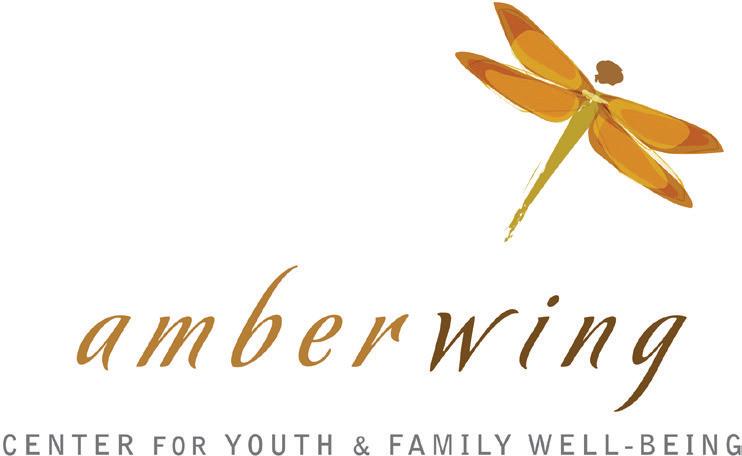
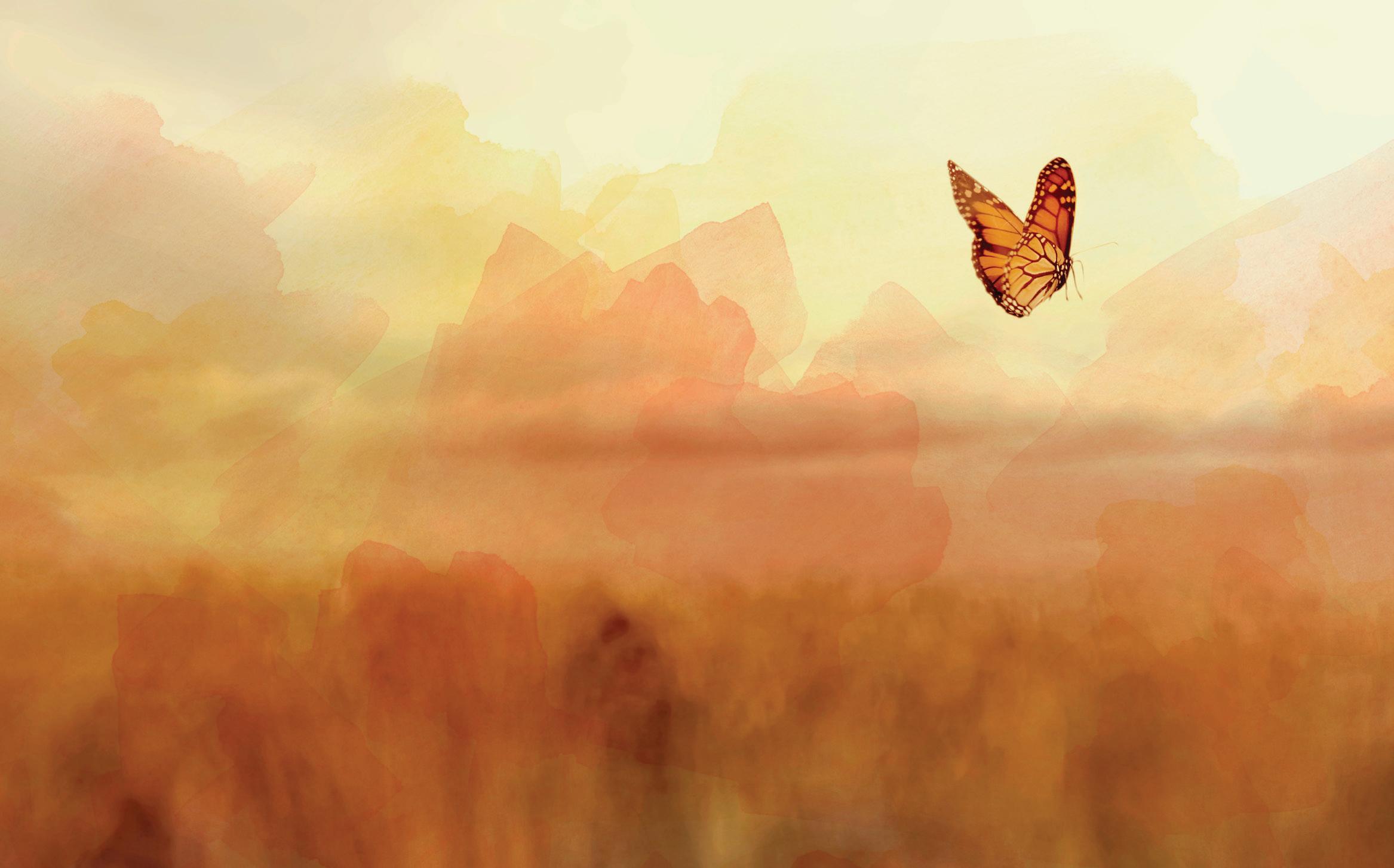







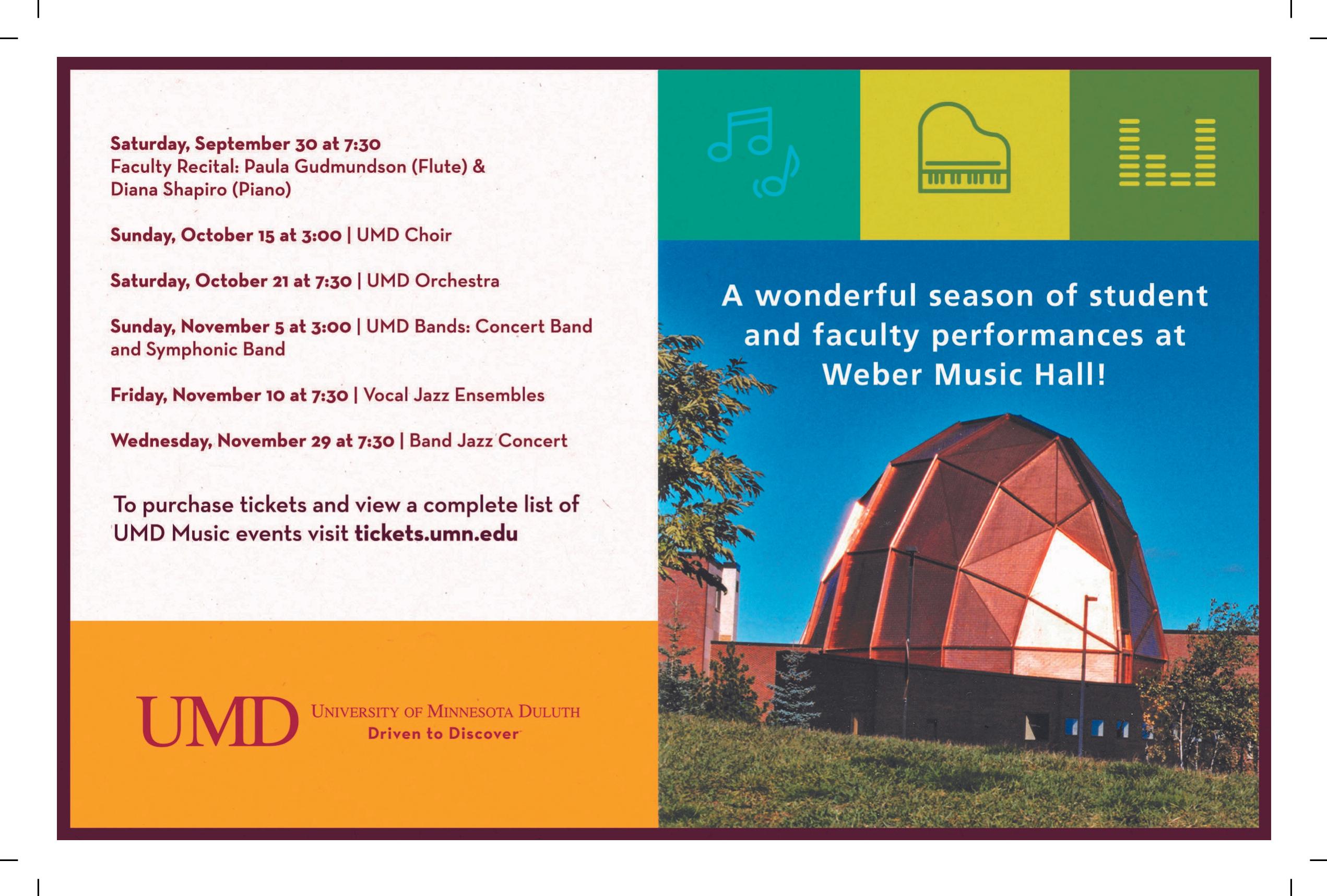

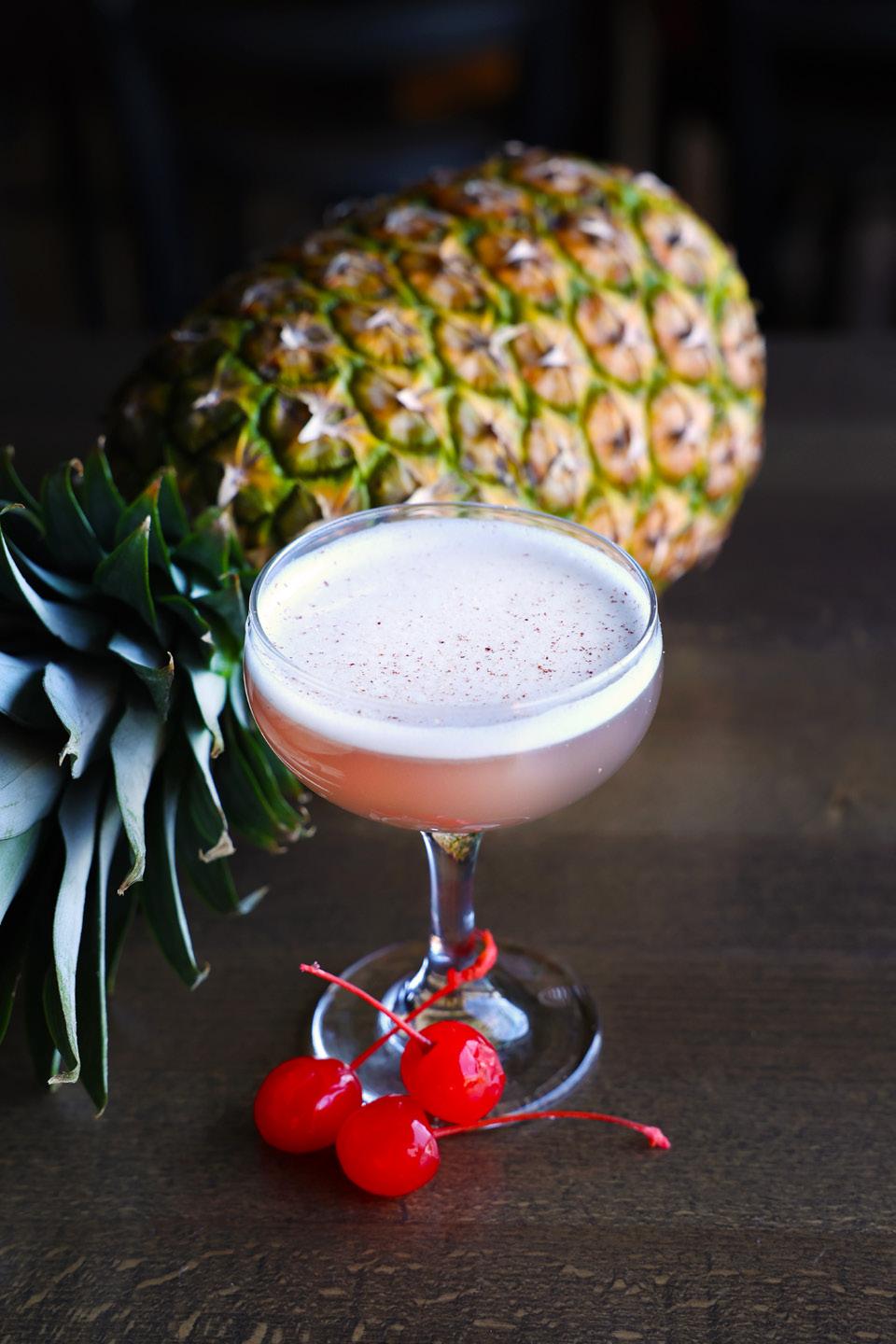













At Johnson Carpet One Floor & Home, we know how important it is for you to feel confident in your flooring selection. Therefore, we strive to ensure that the floor we’ve created together, is as beautiful as the one in your dreams. If not, we’ll replace it for free. That’s what we call The Beautiful Guarantee®.




